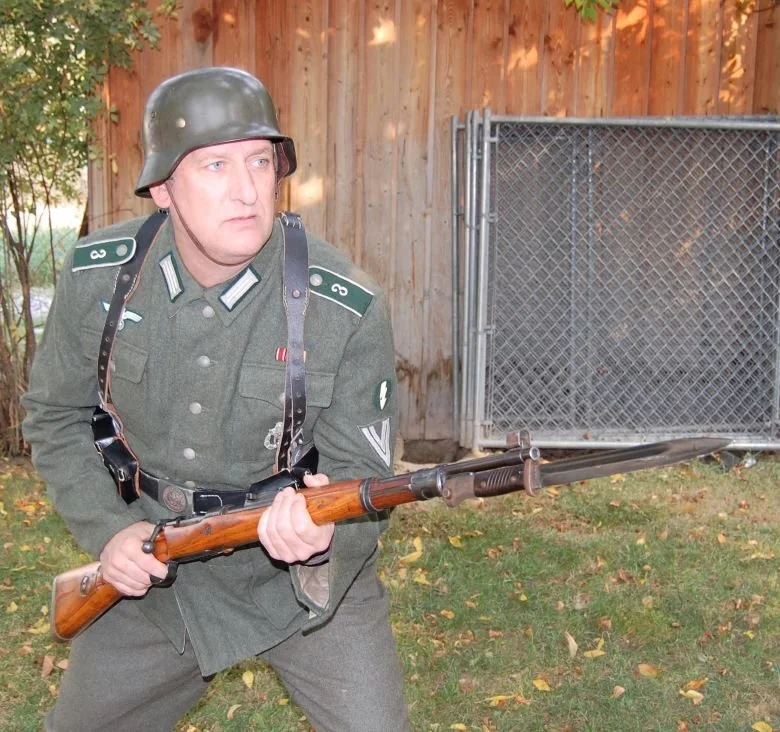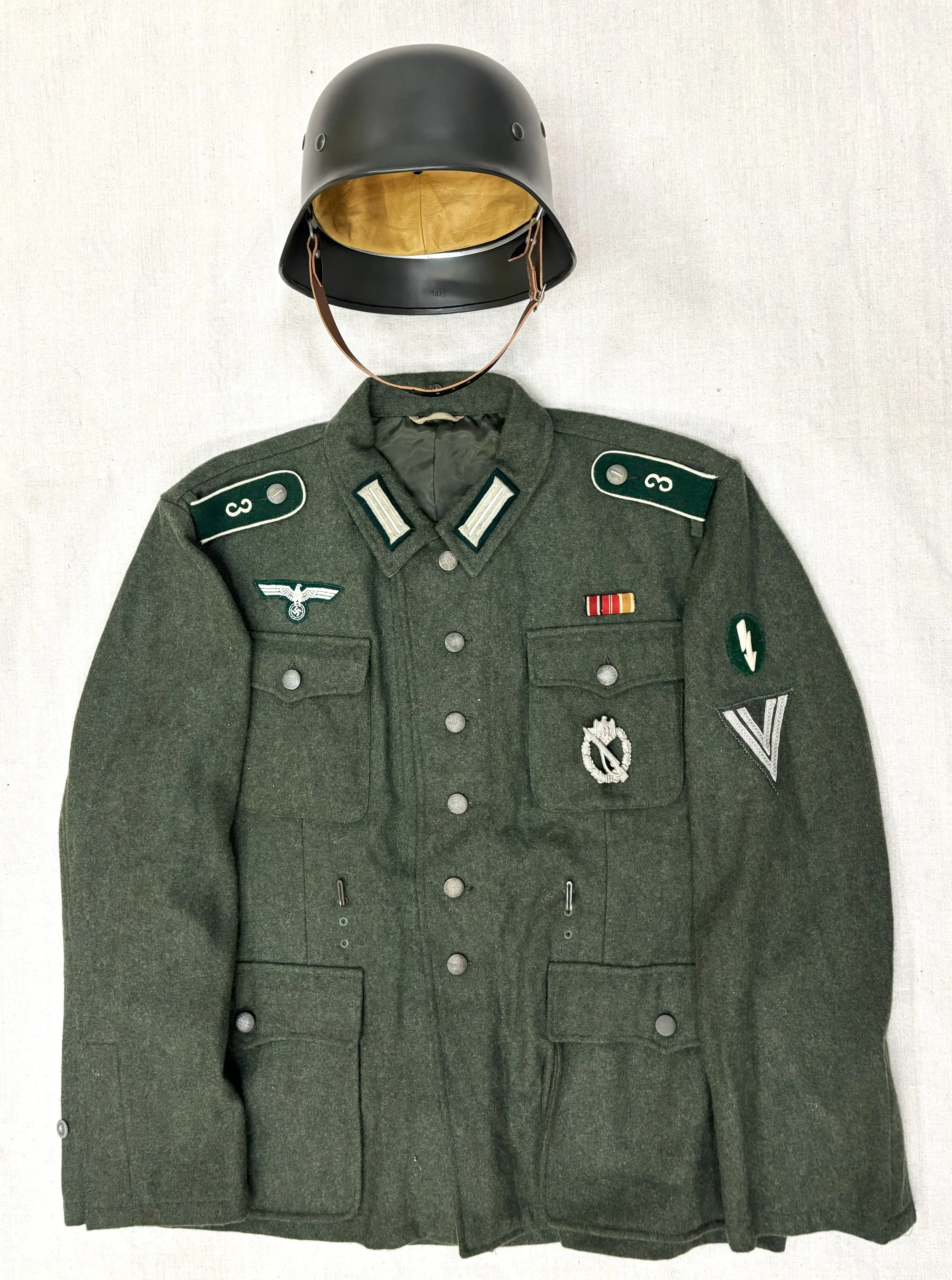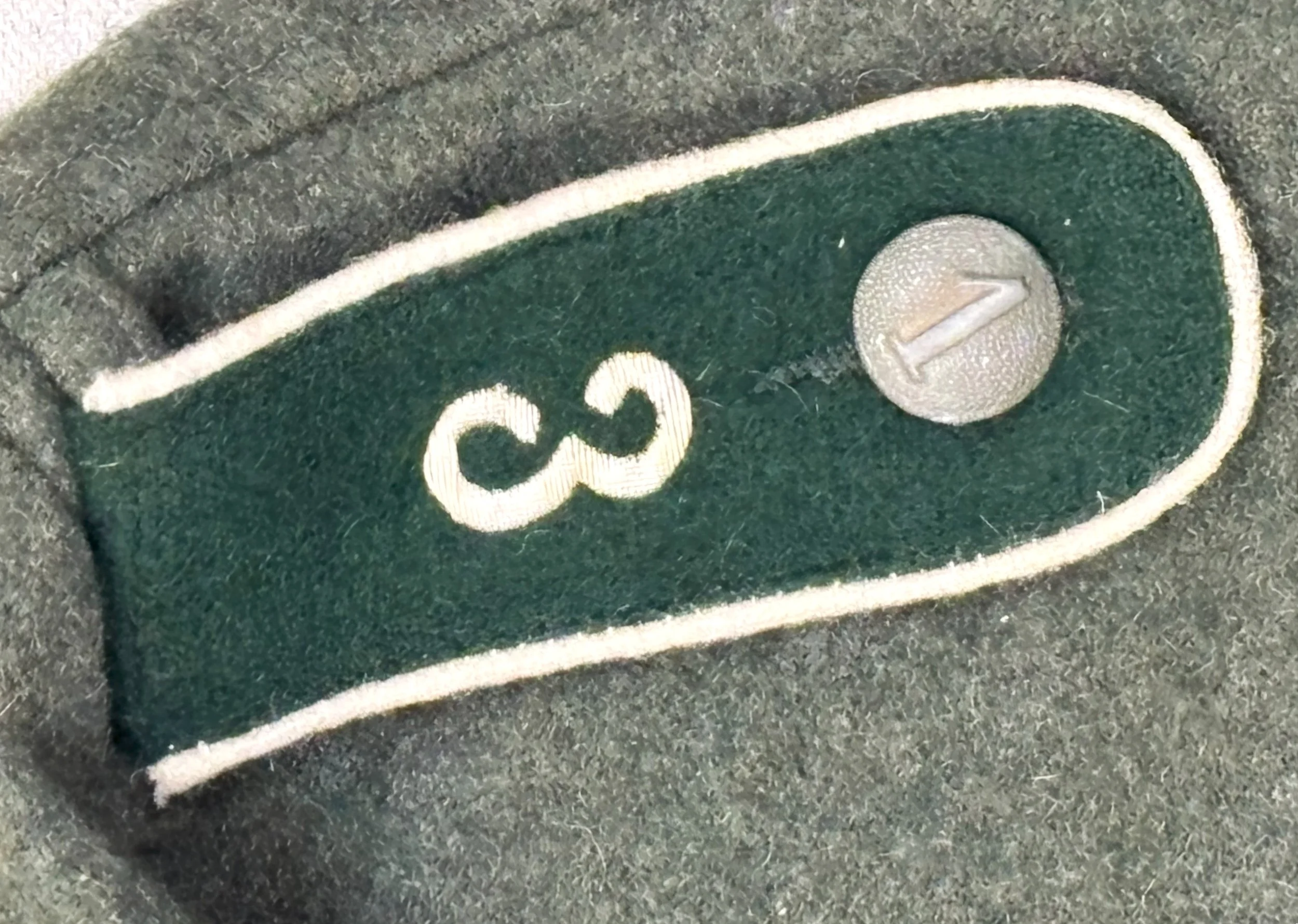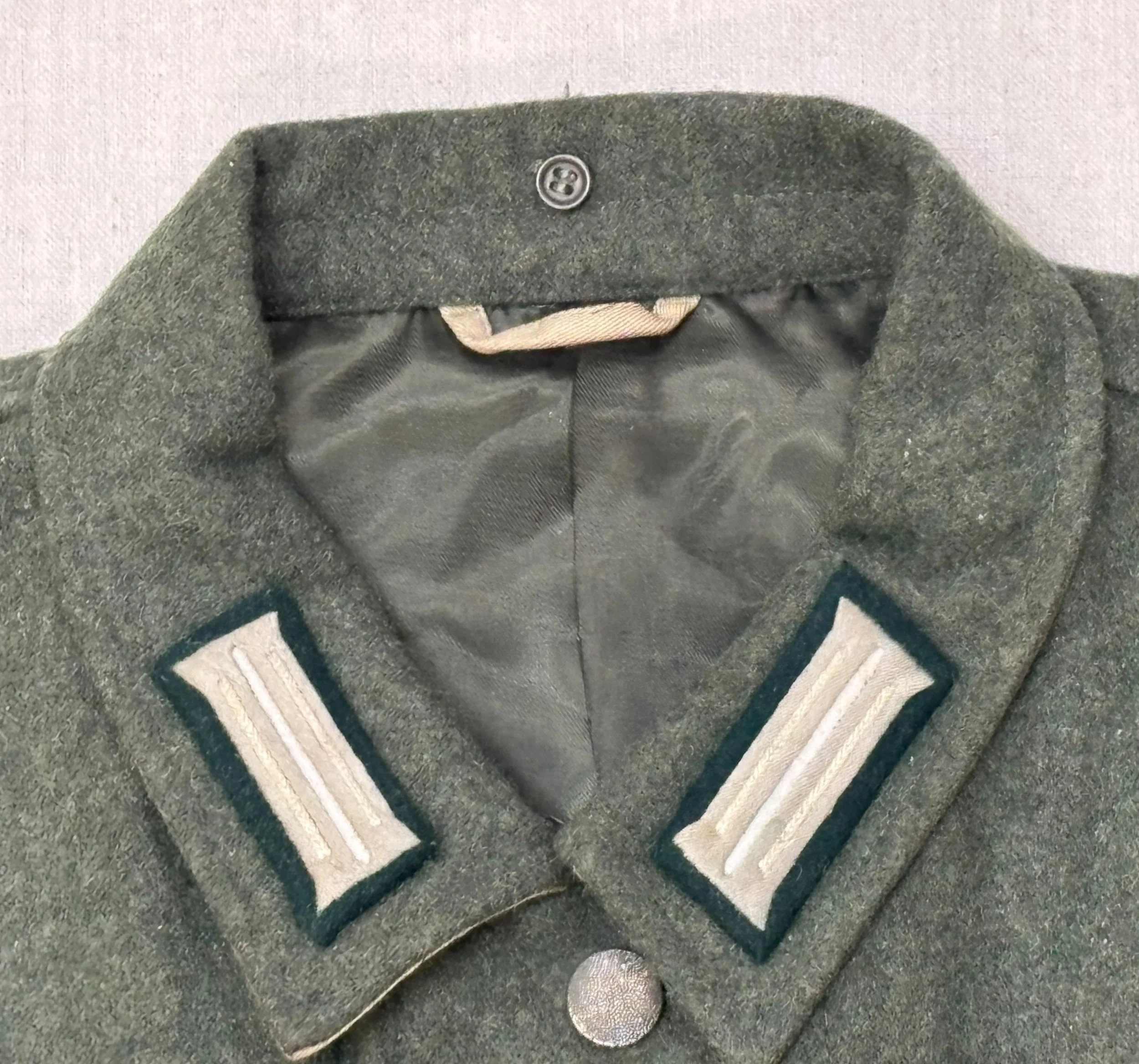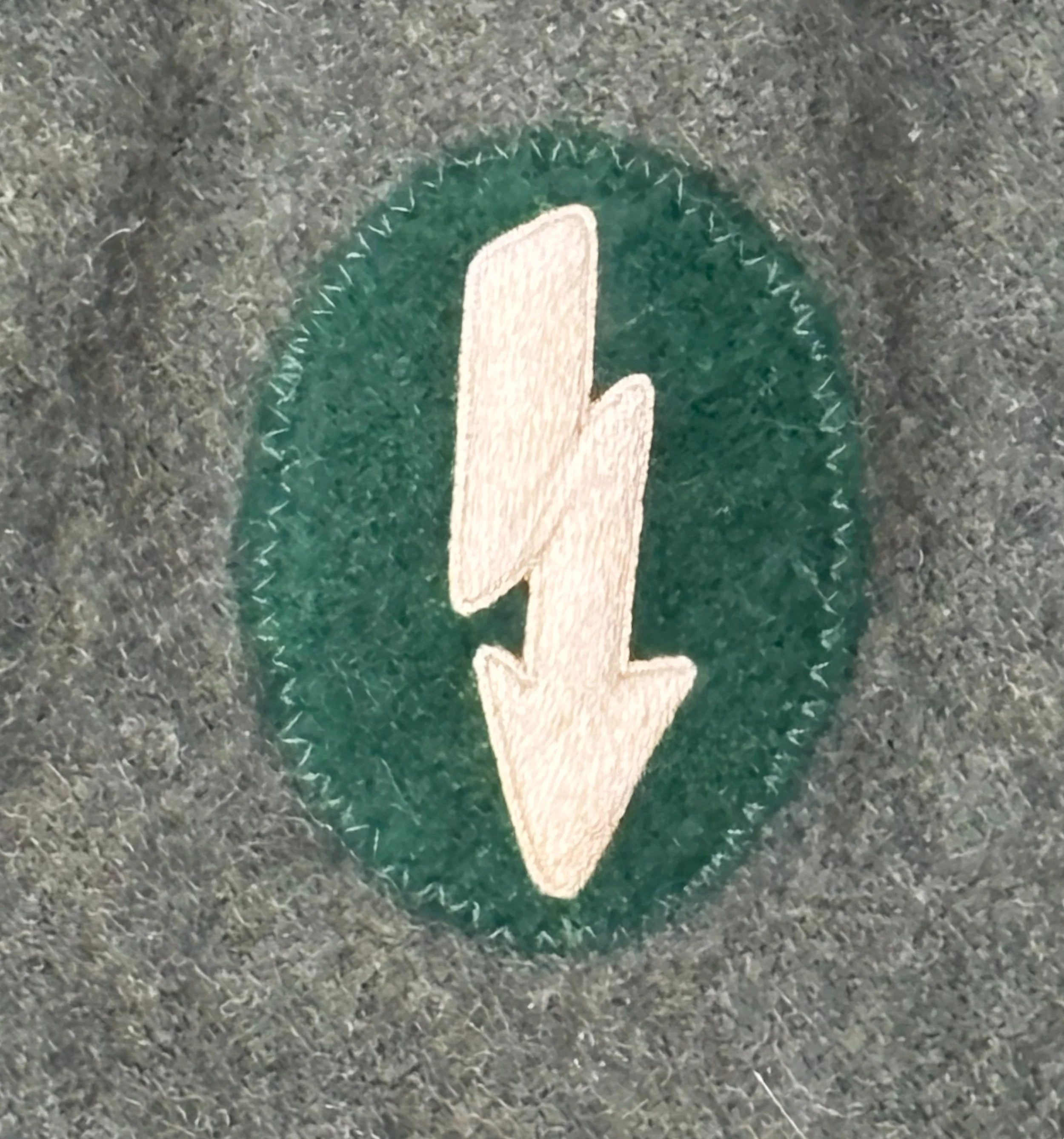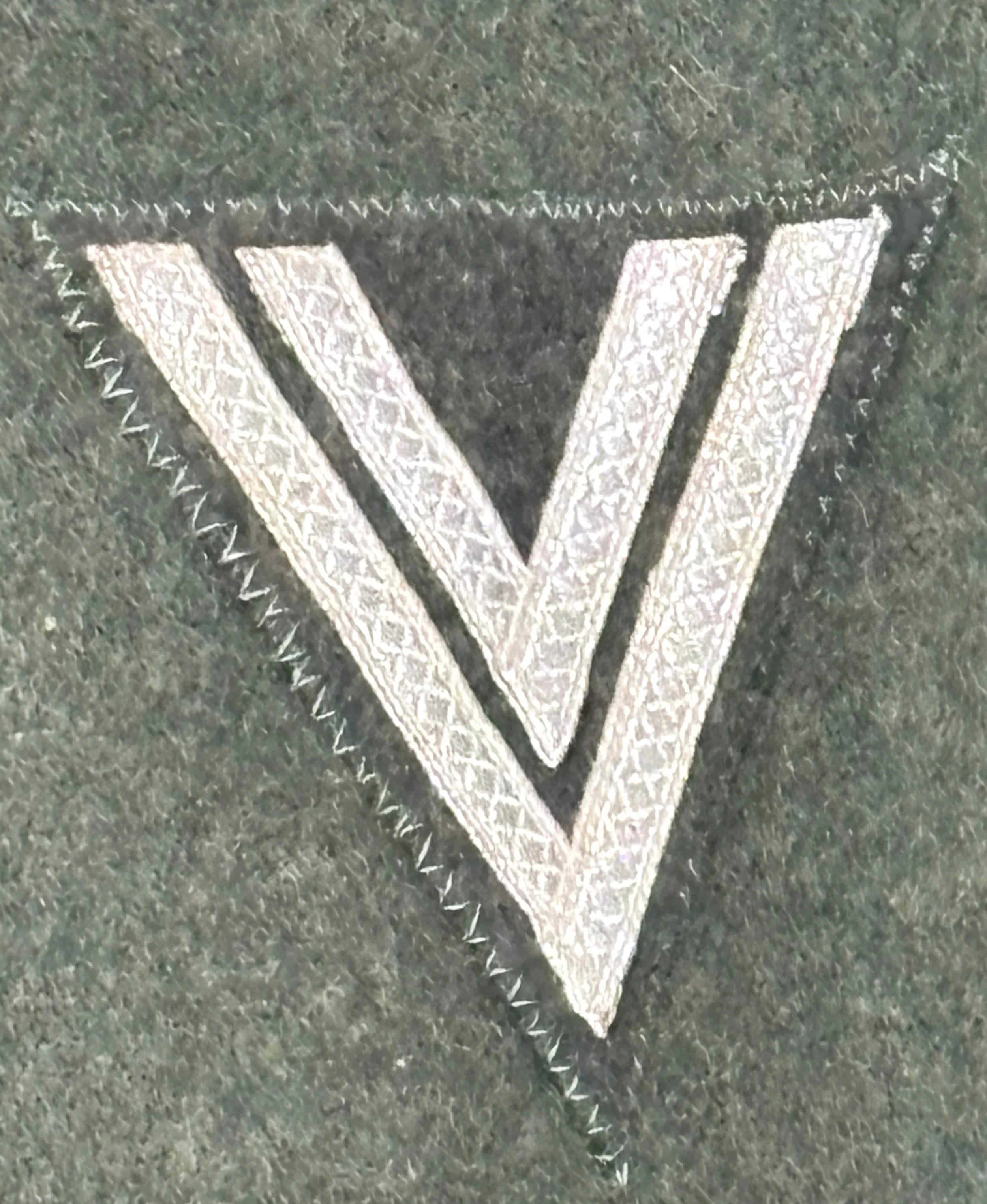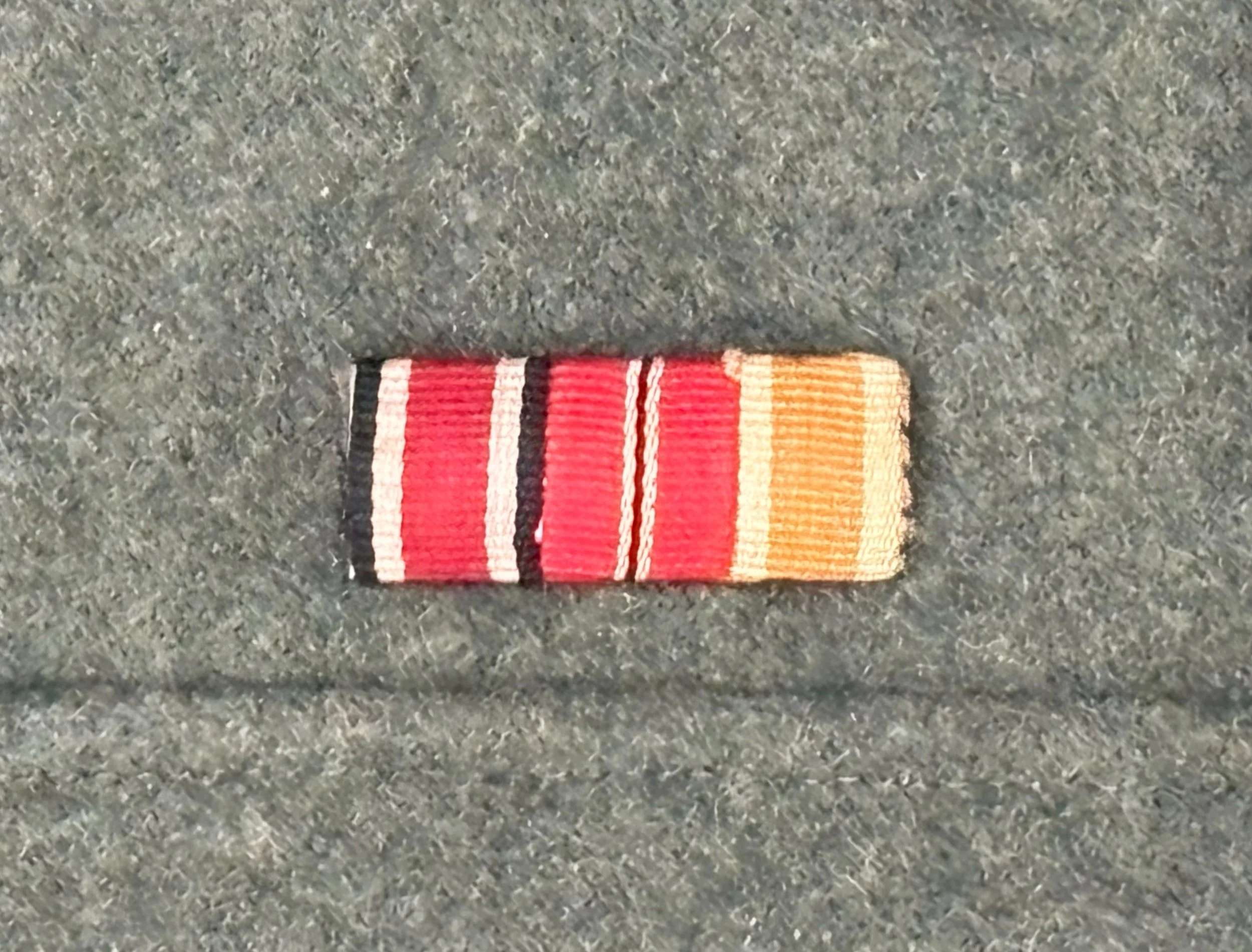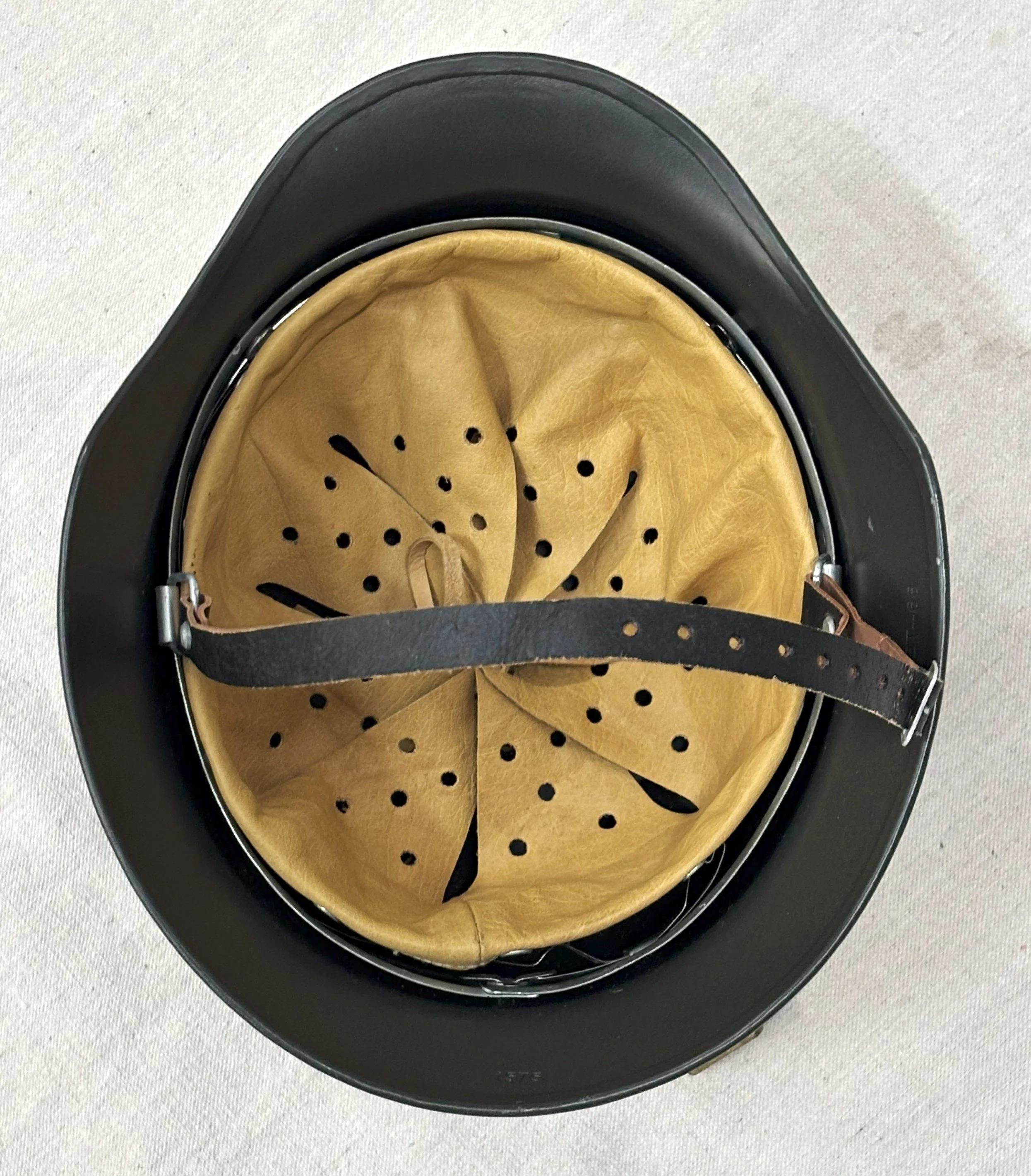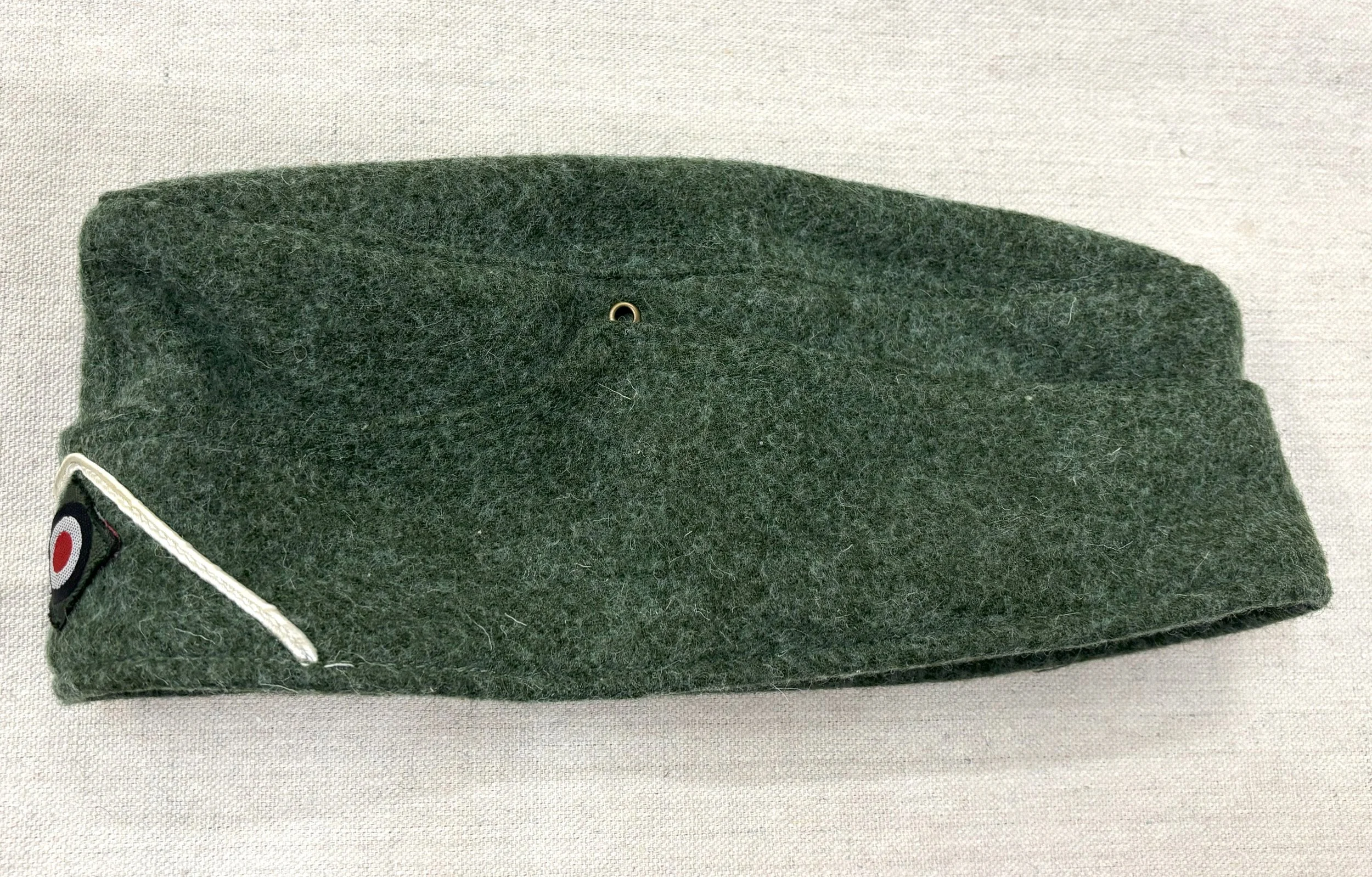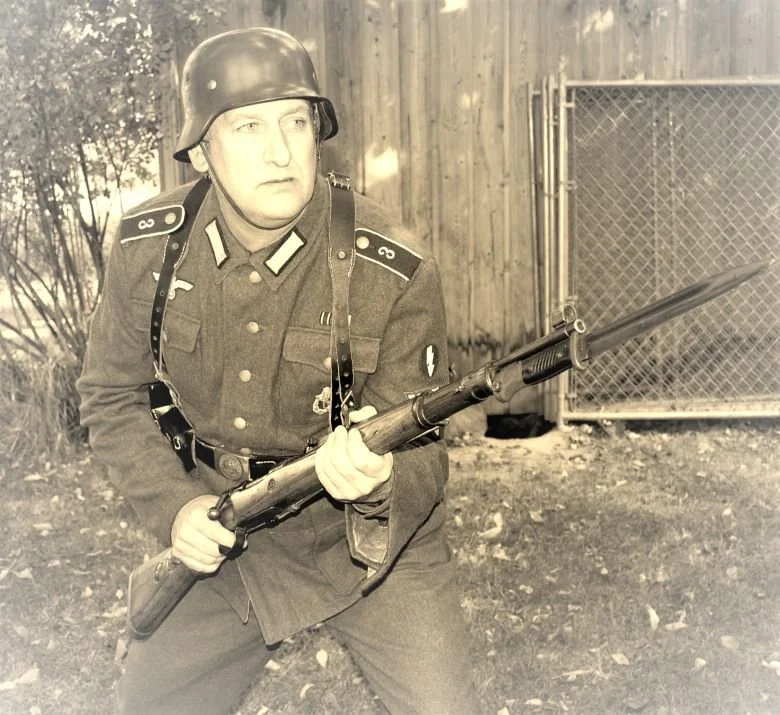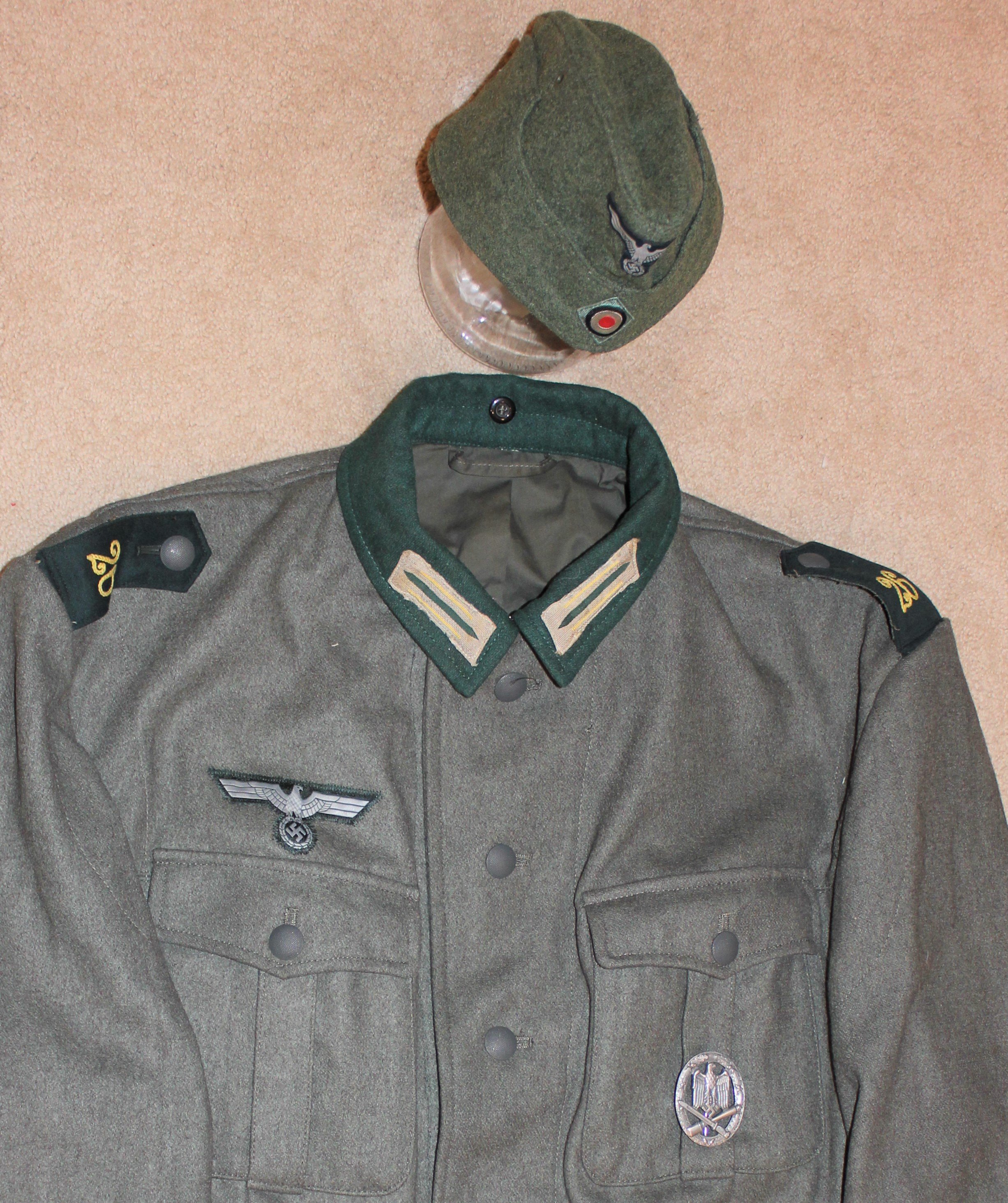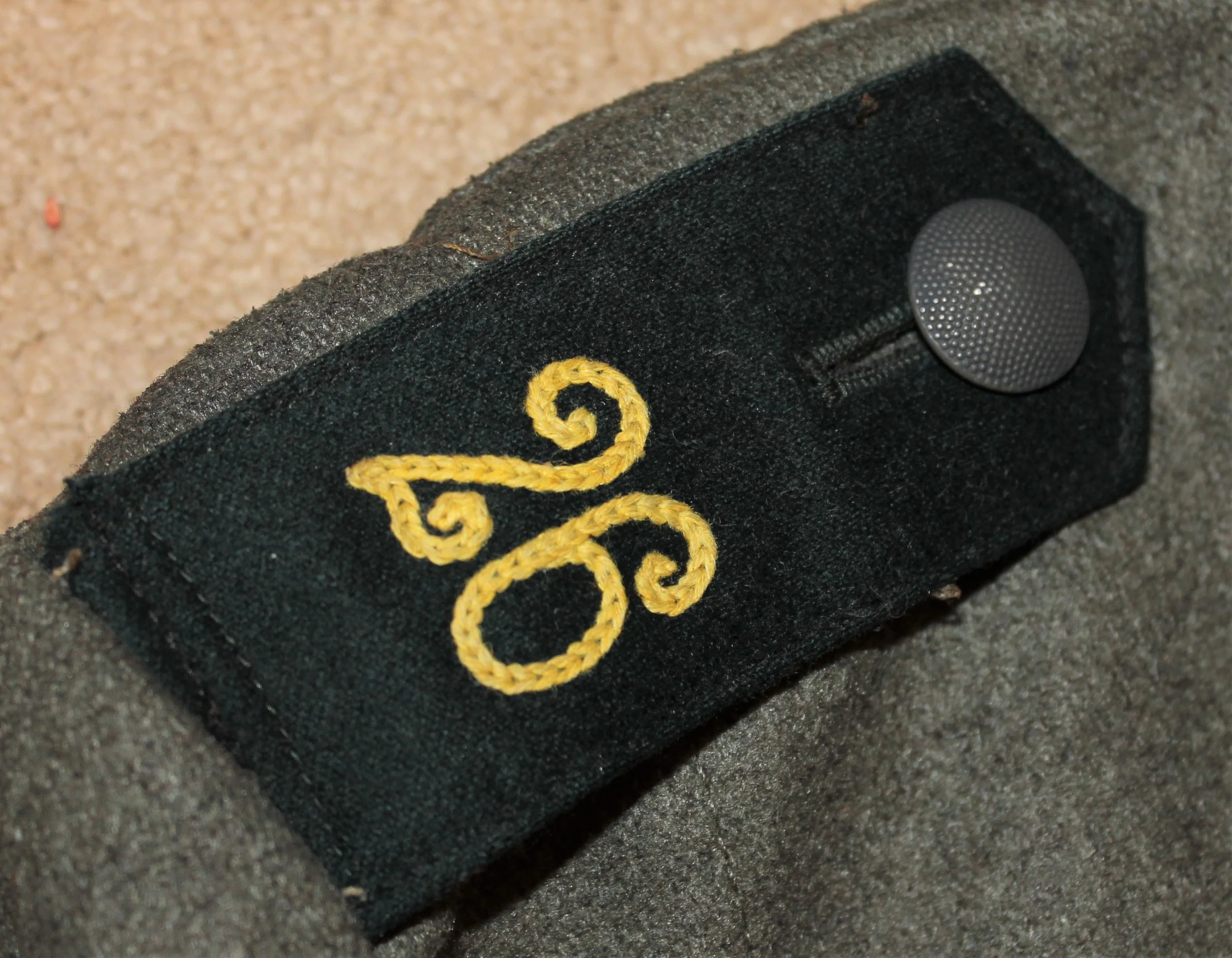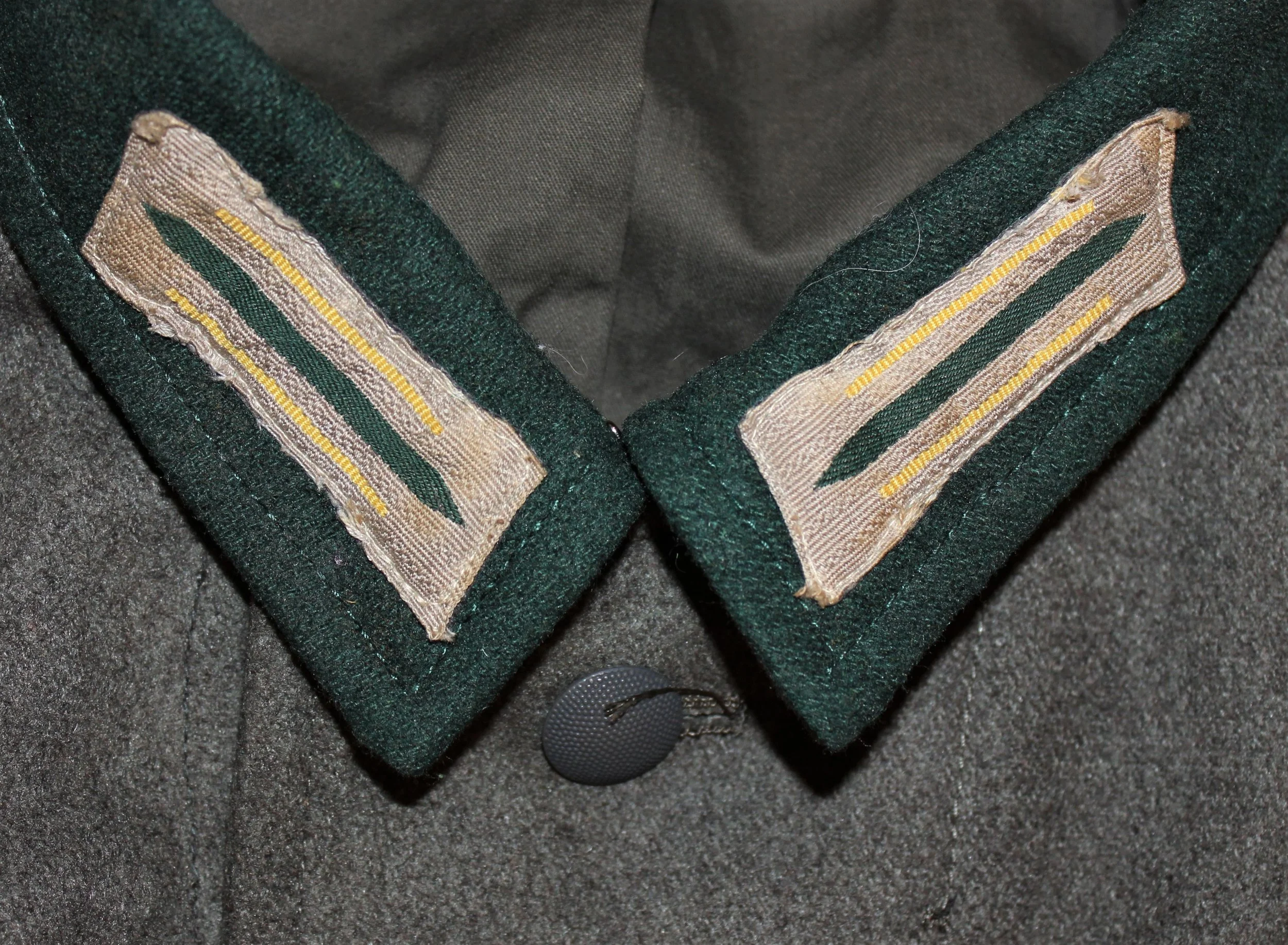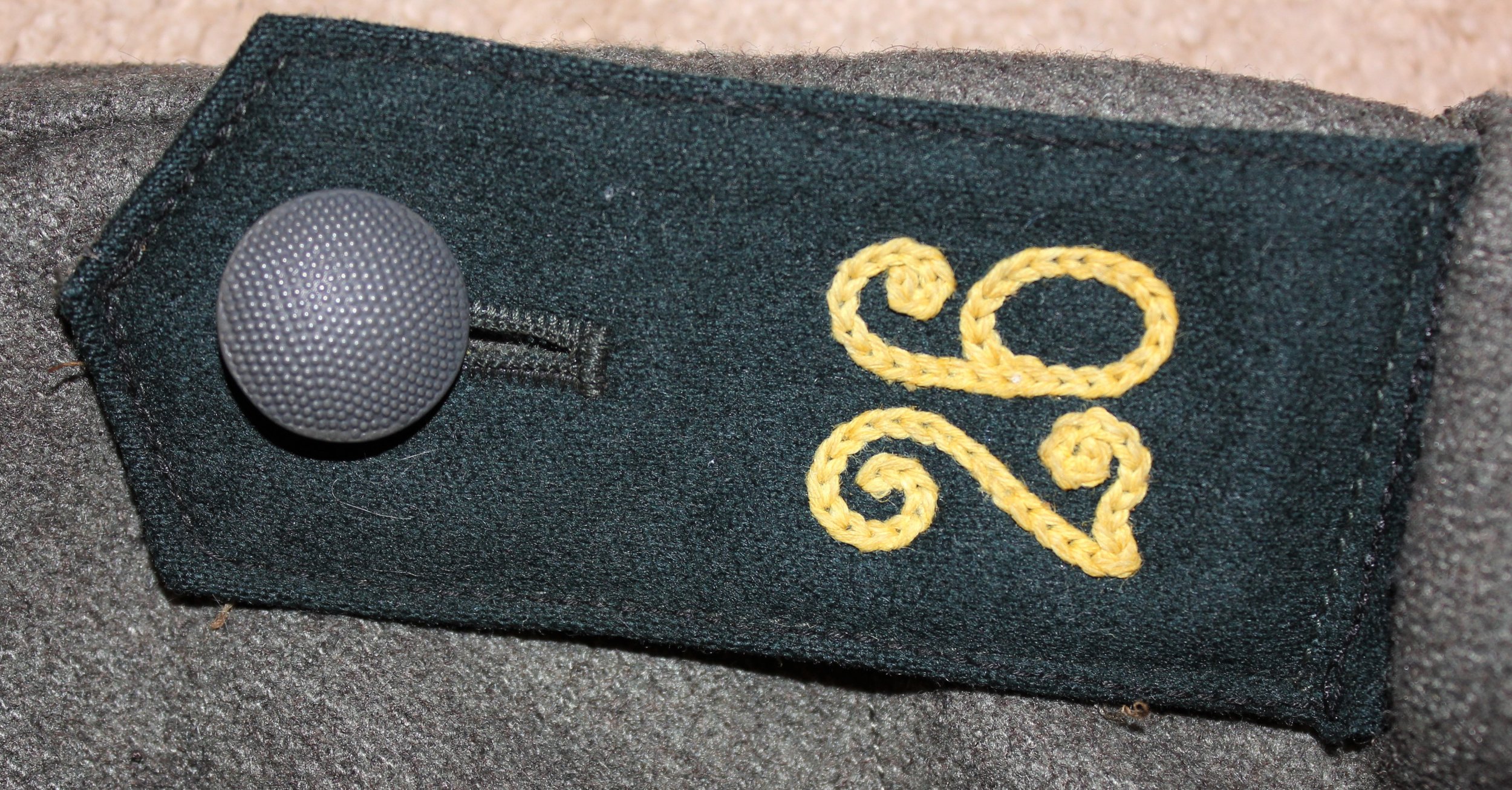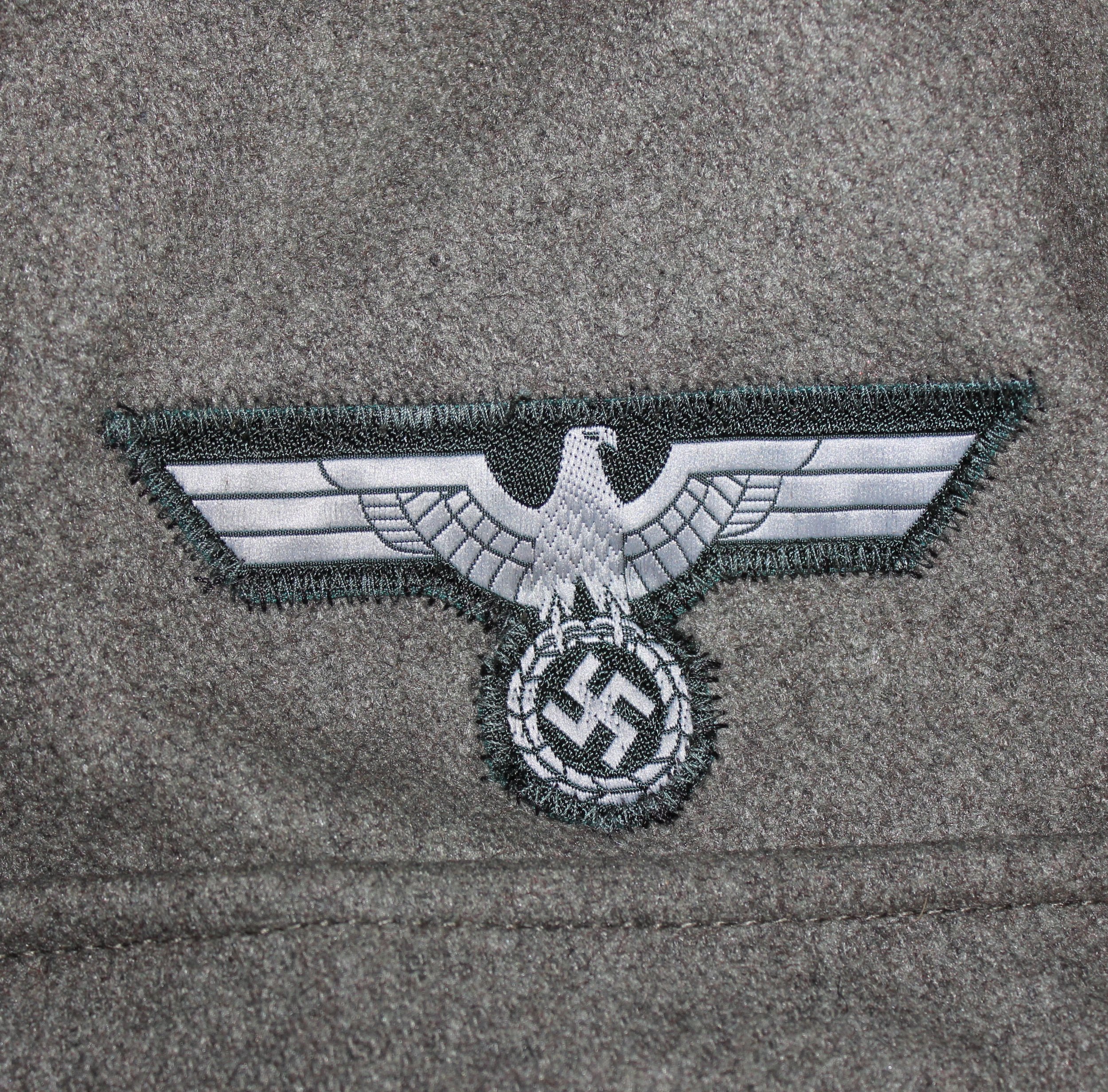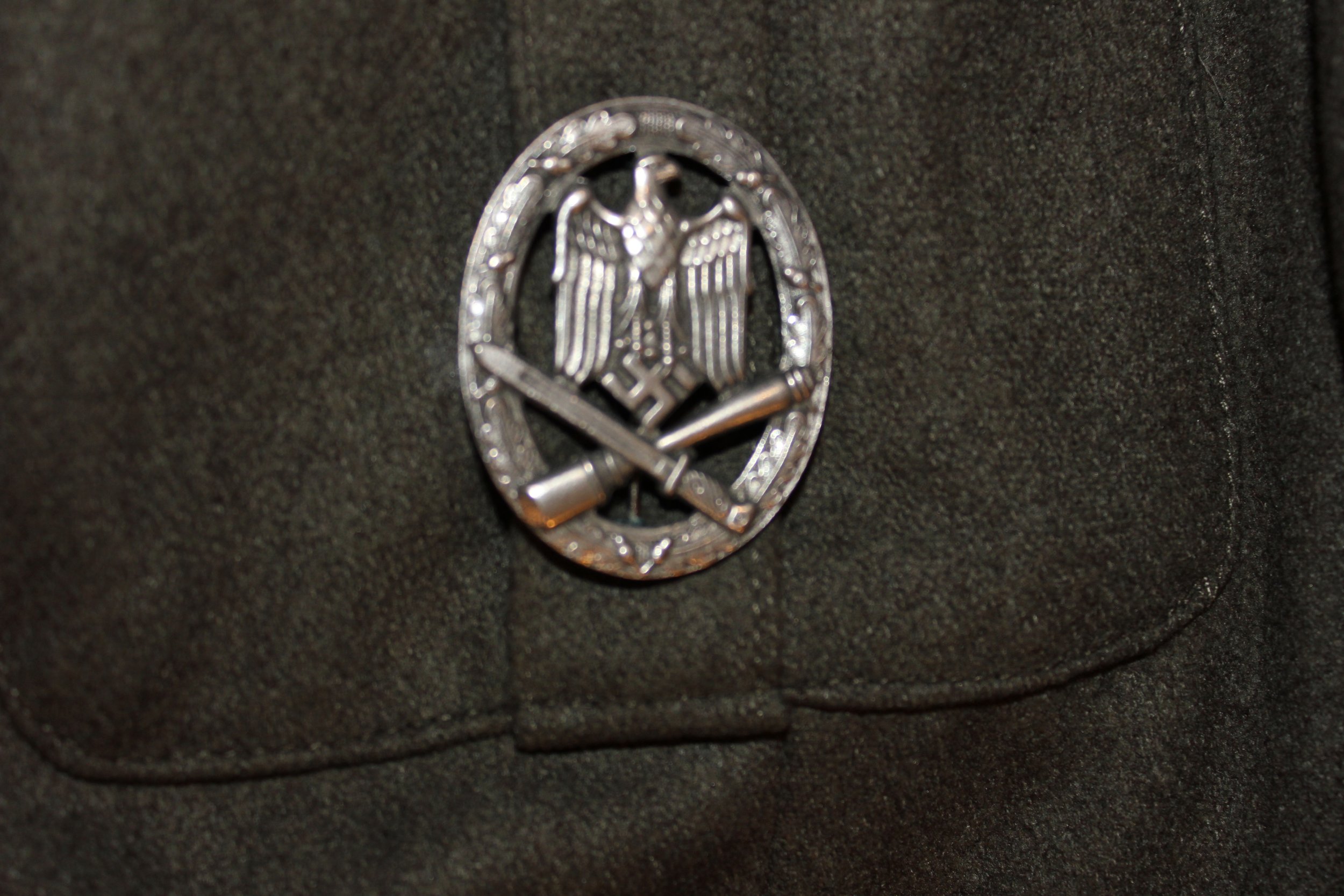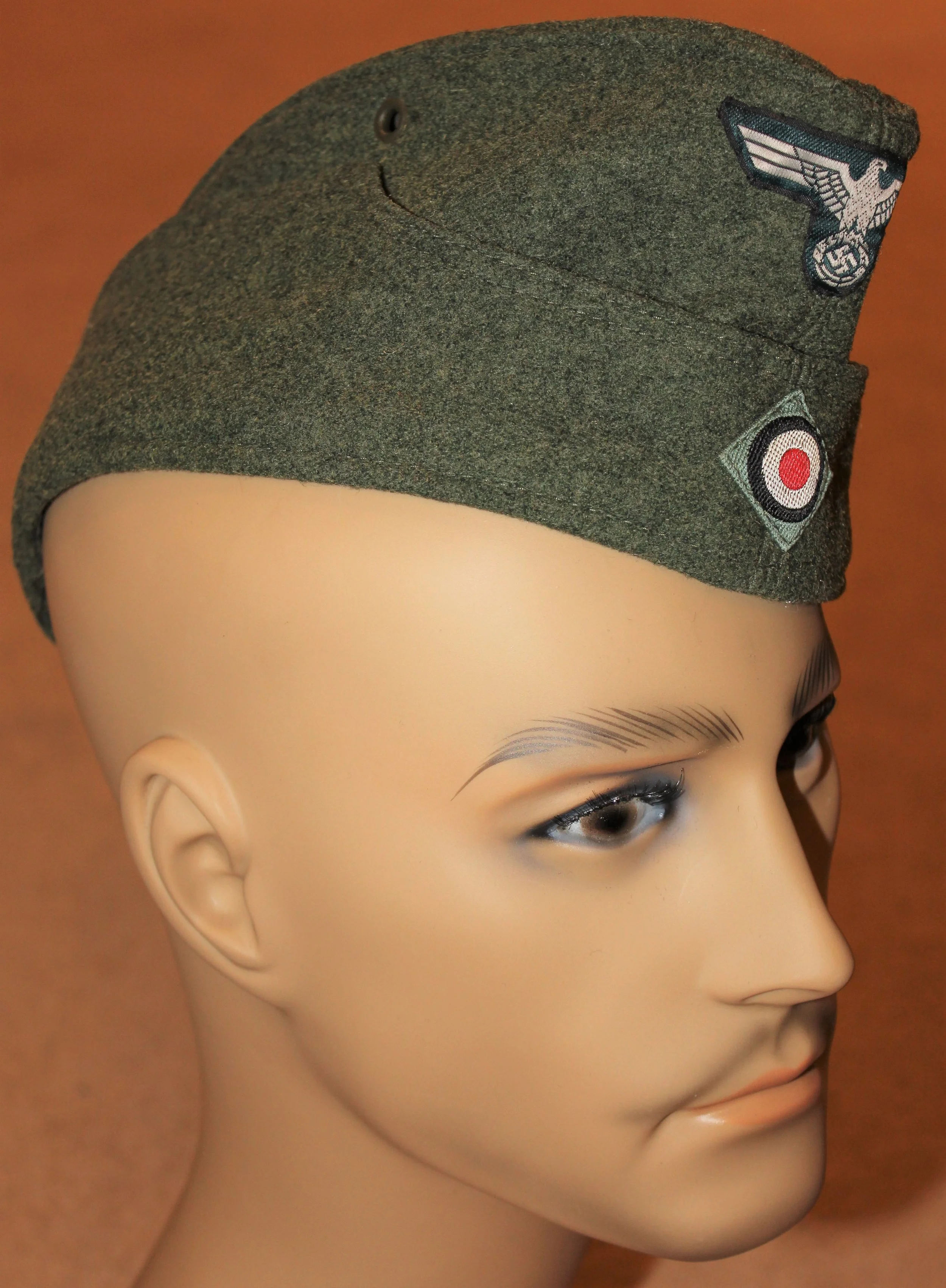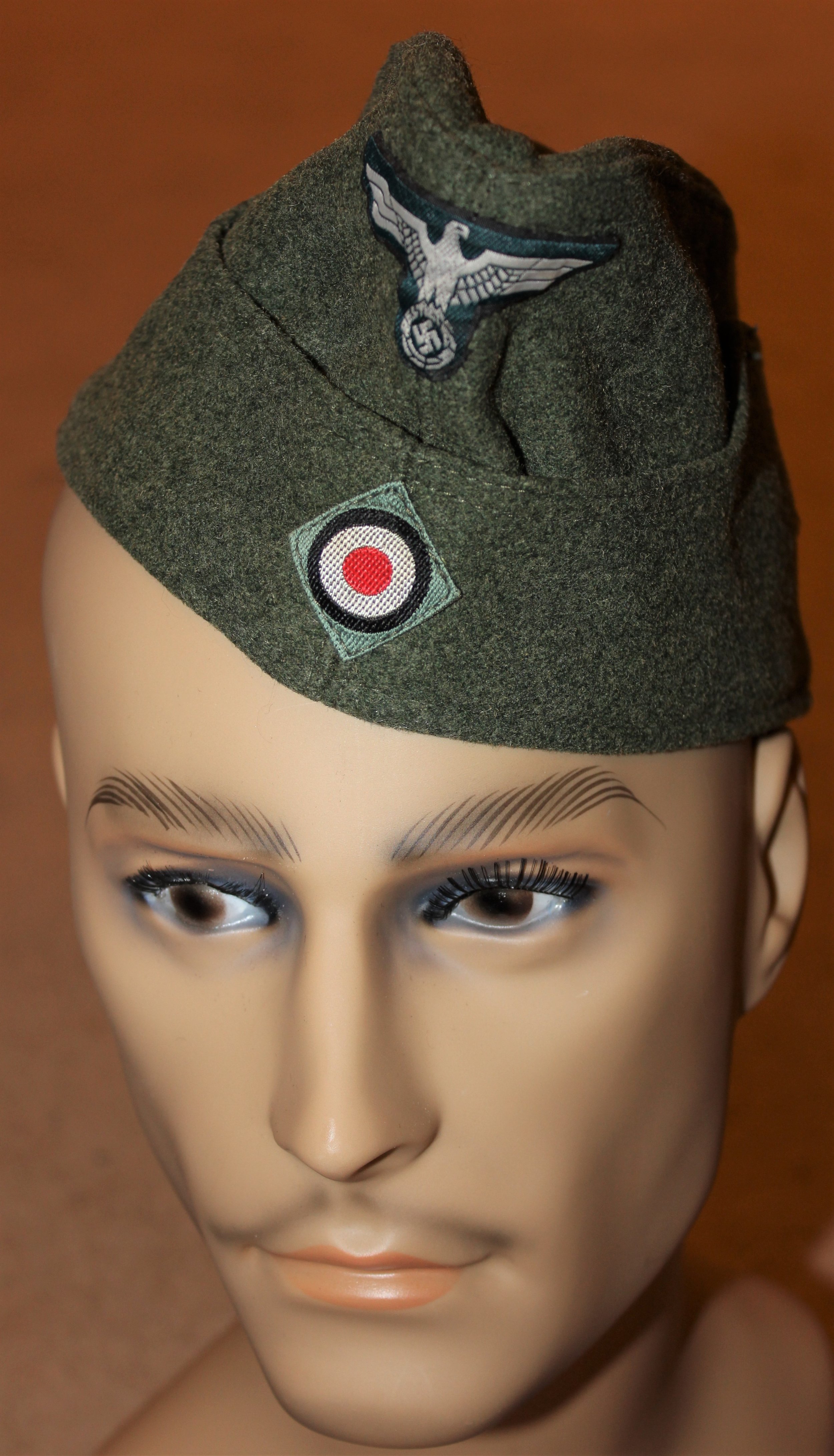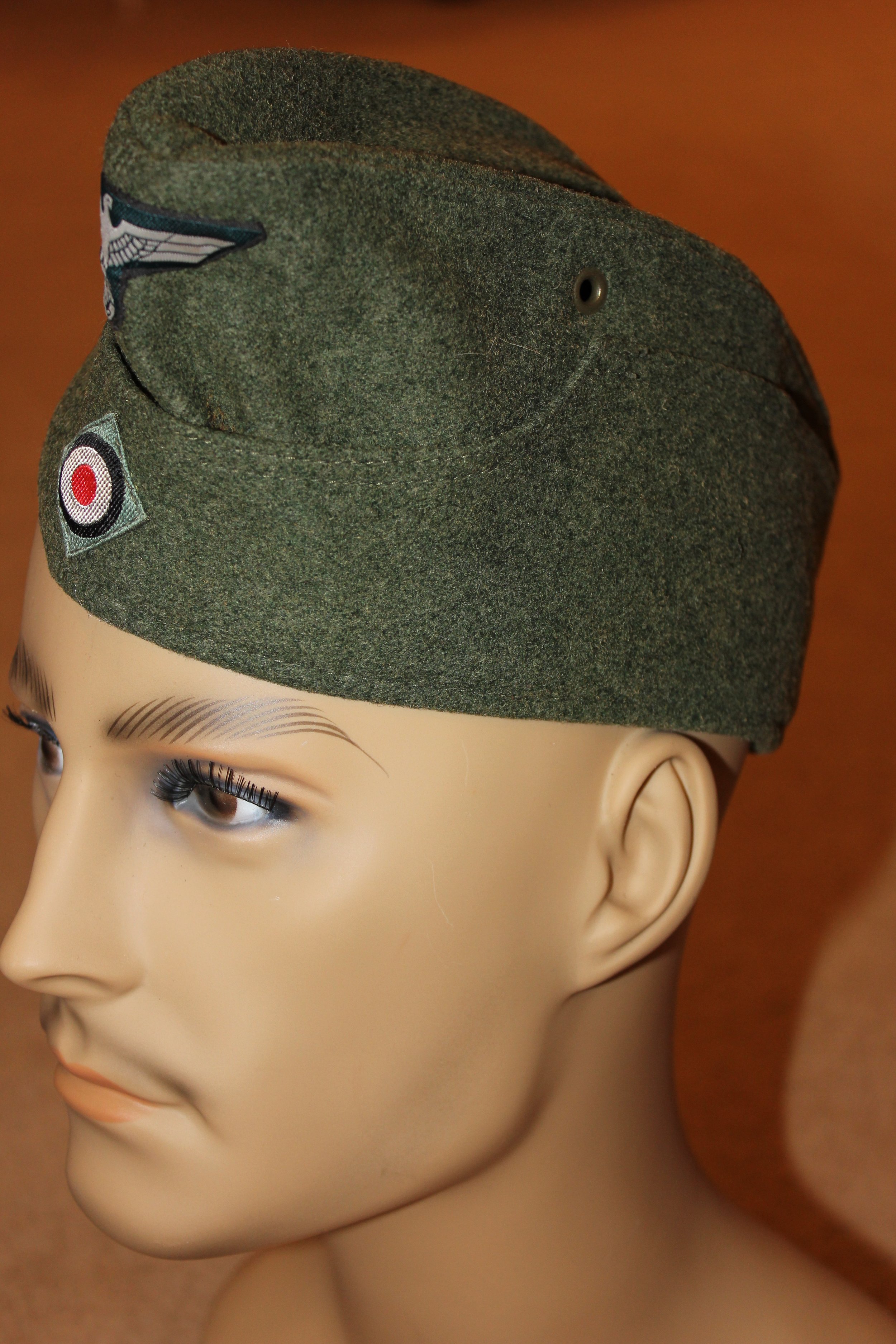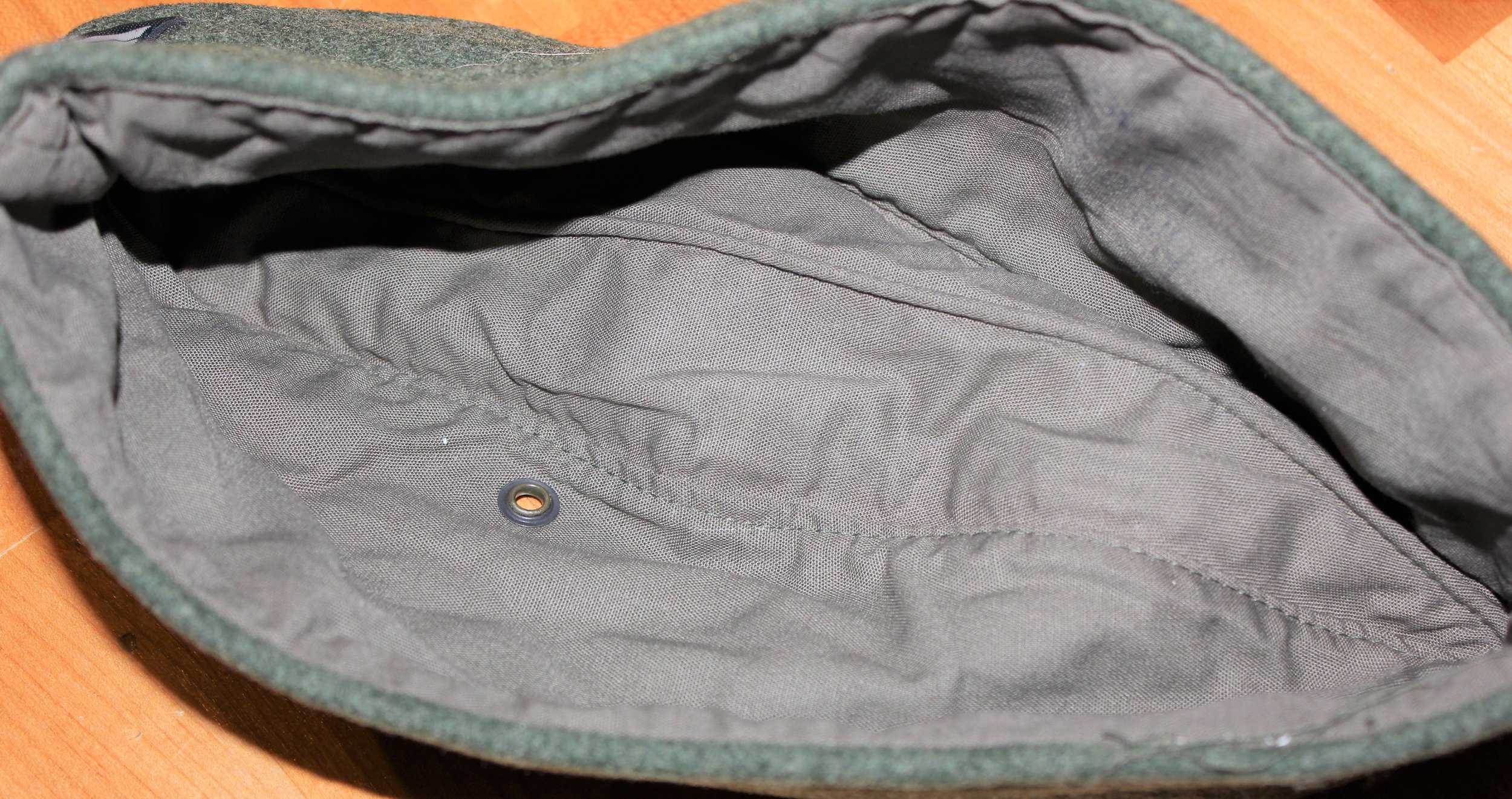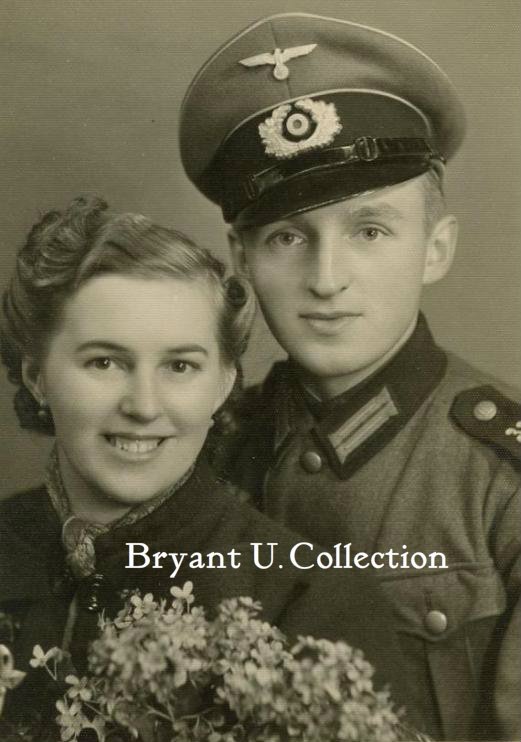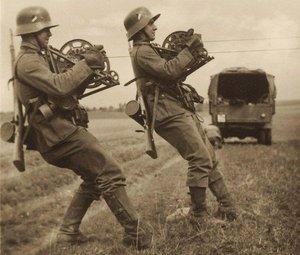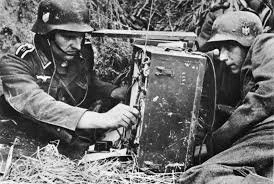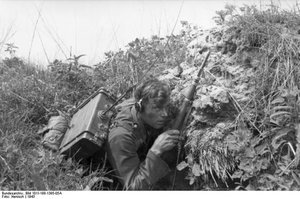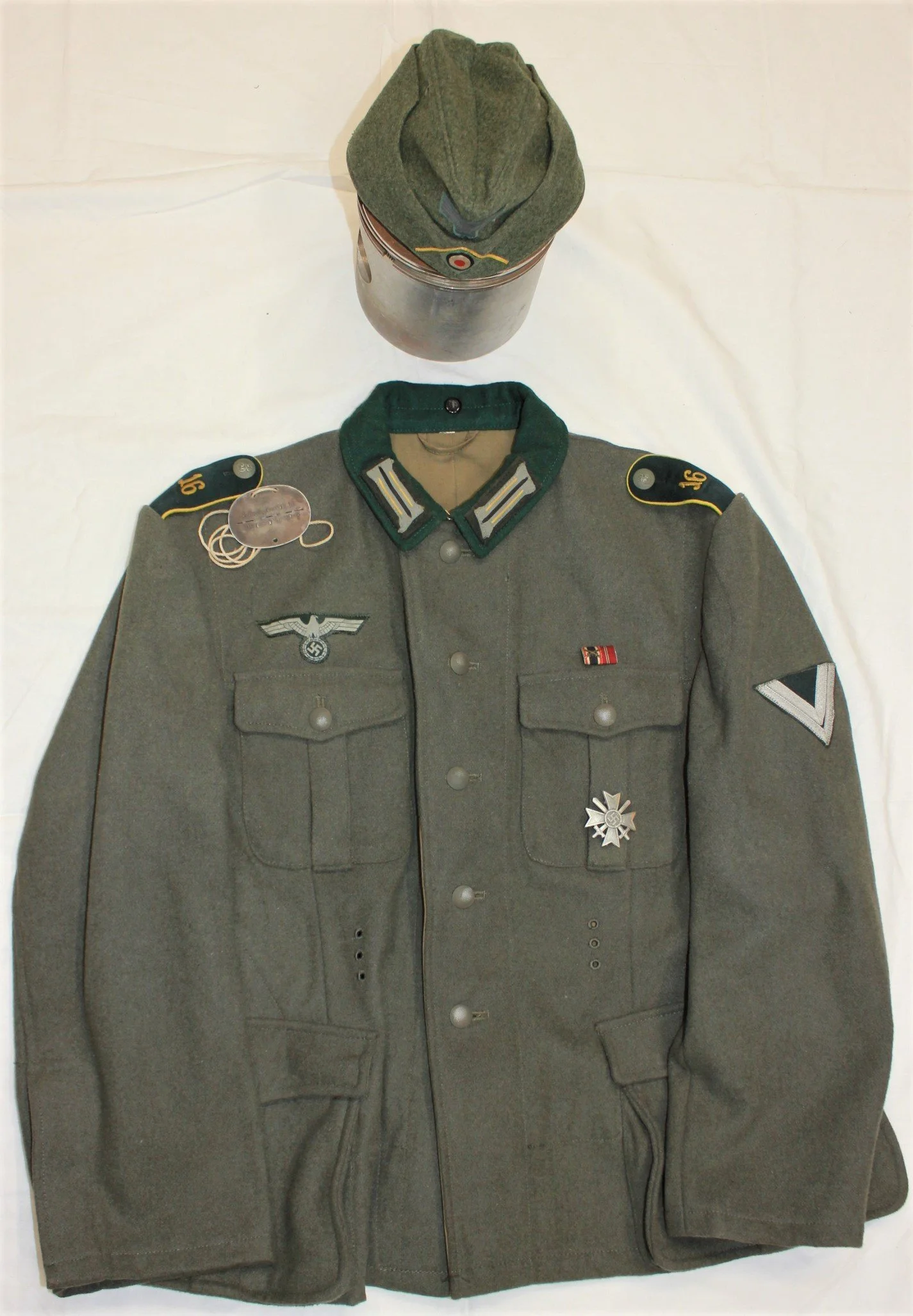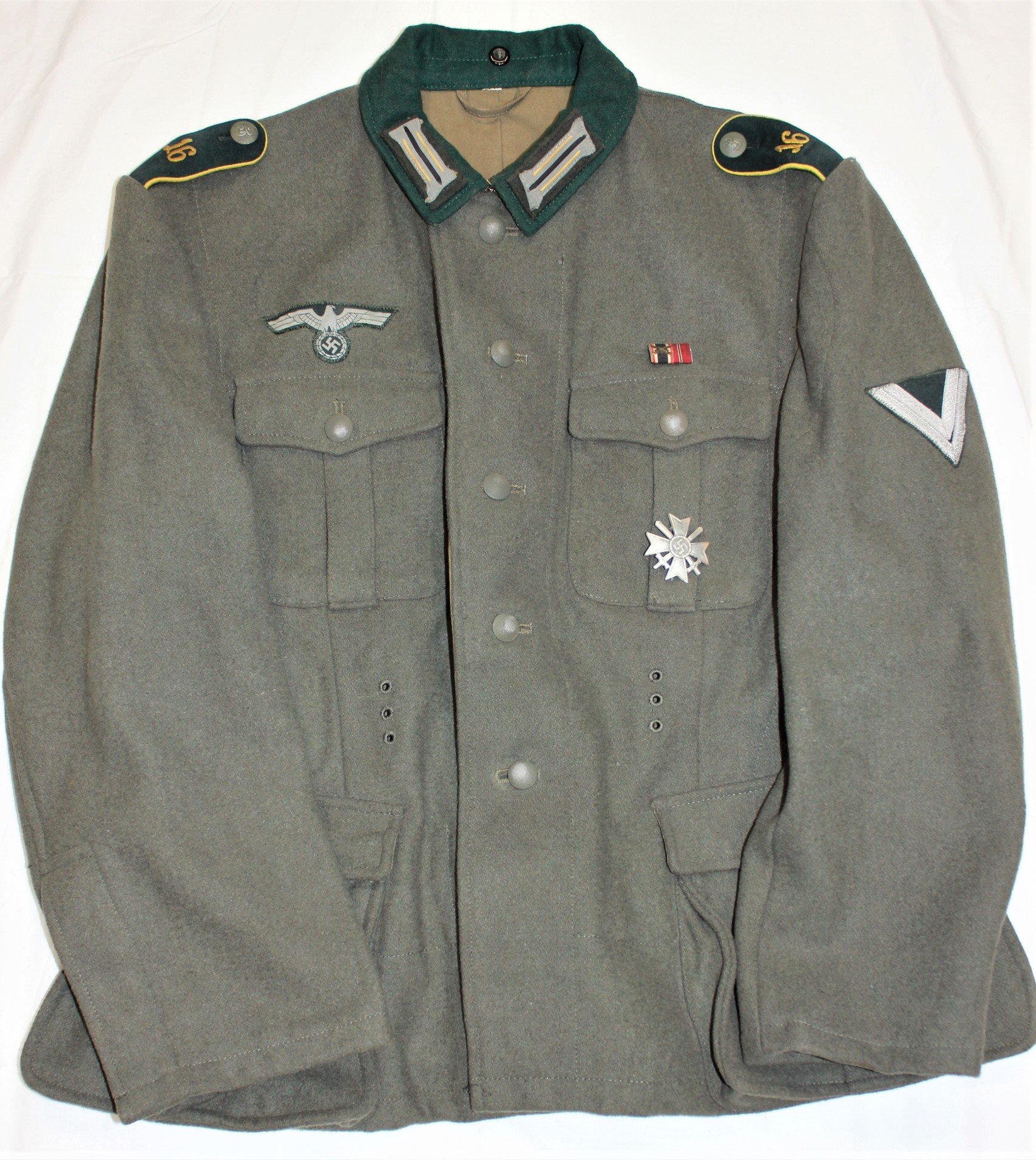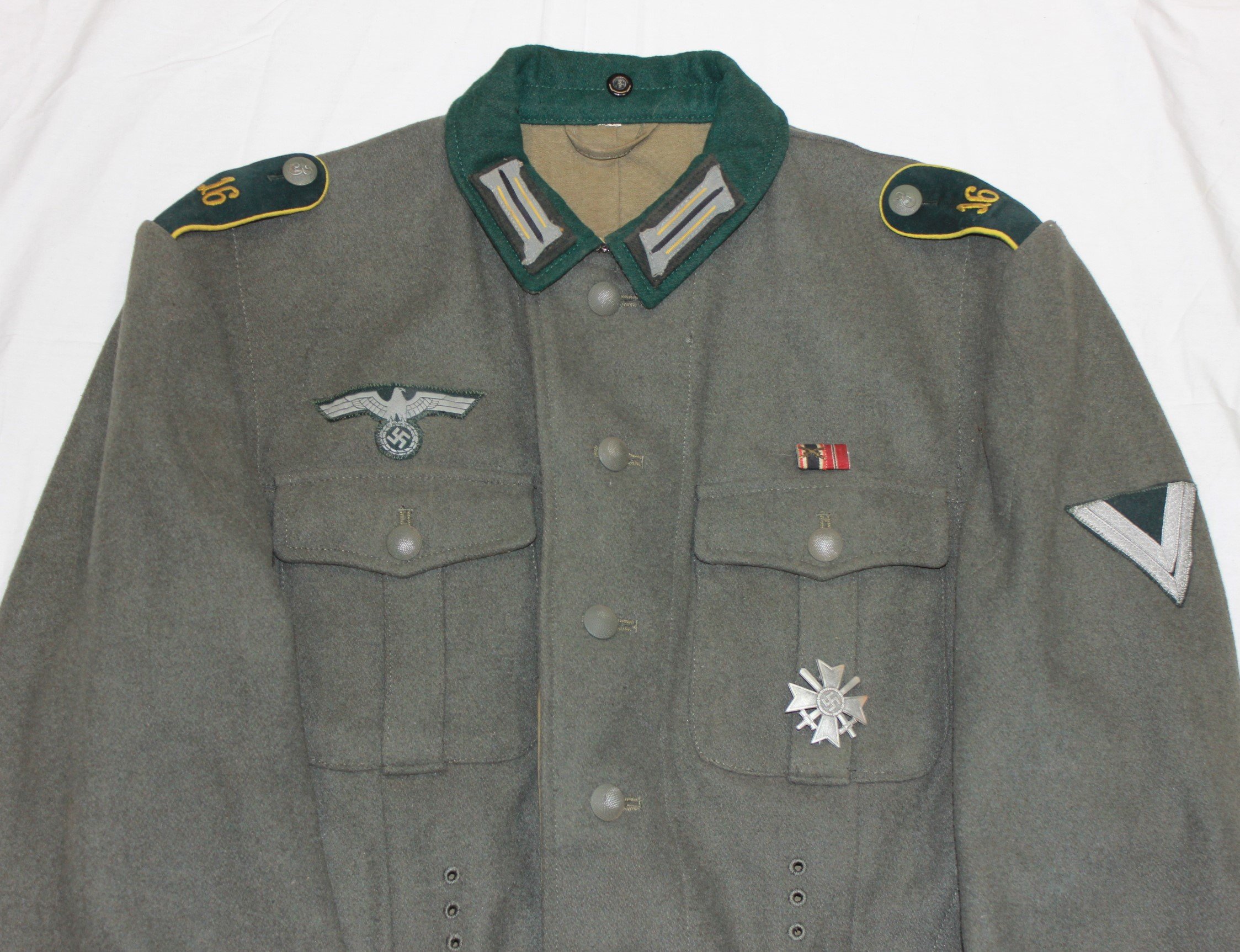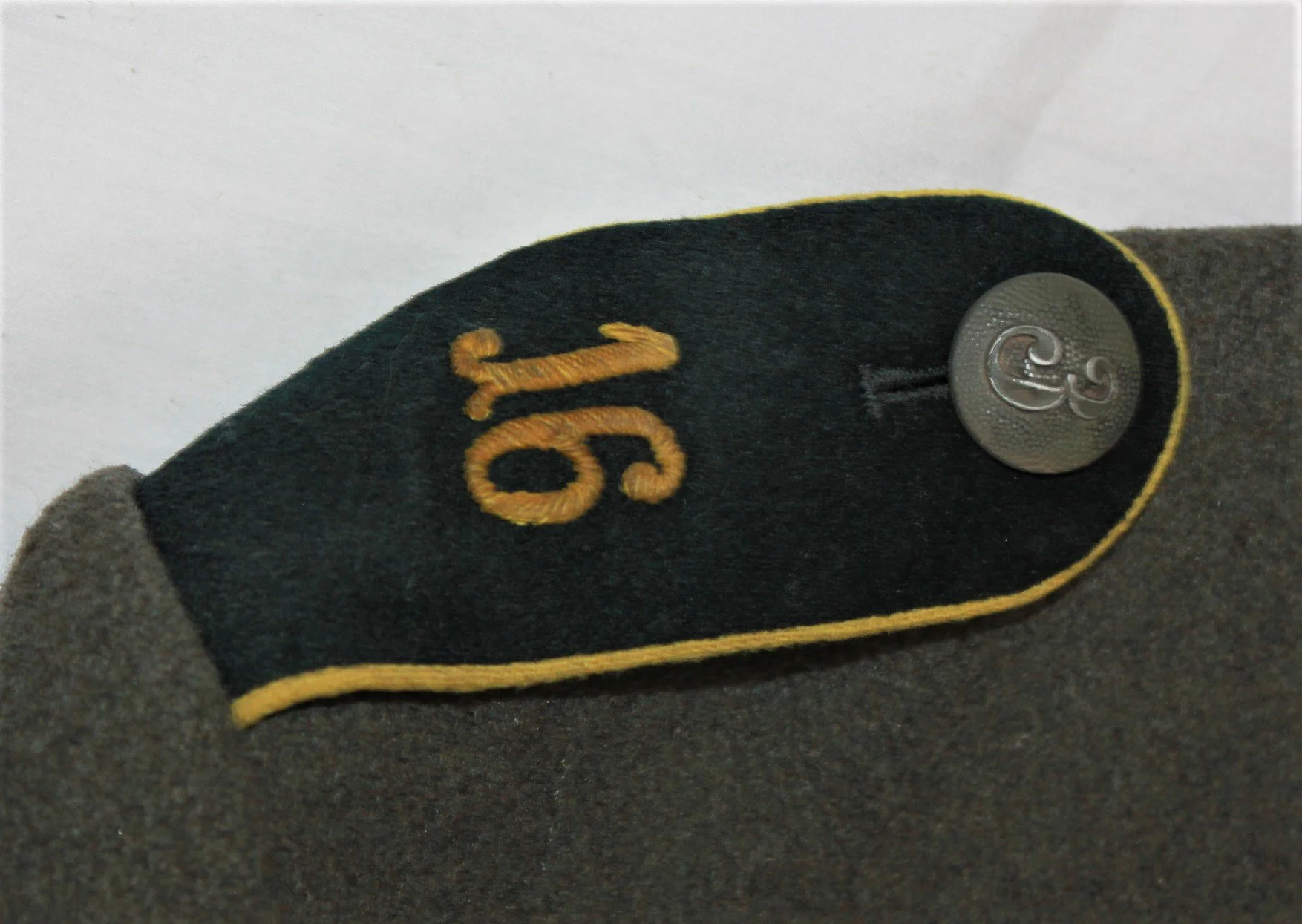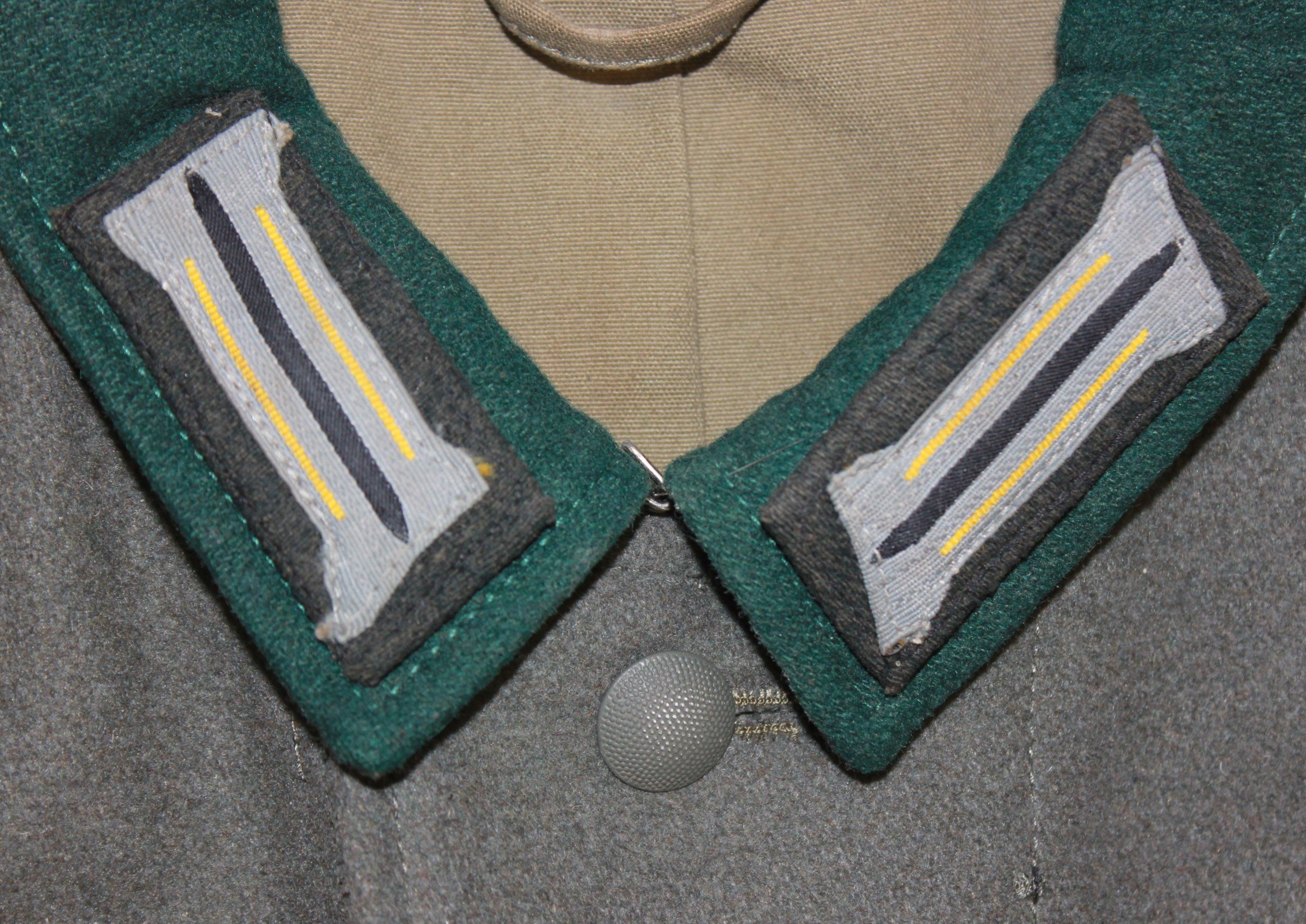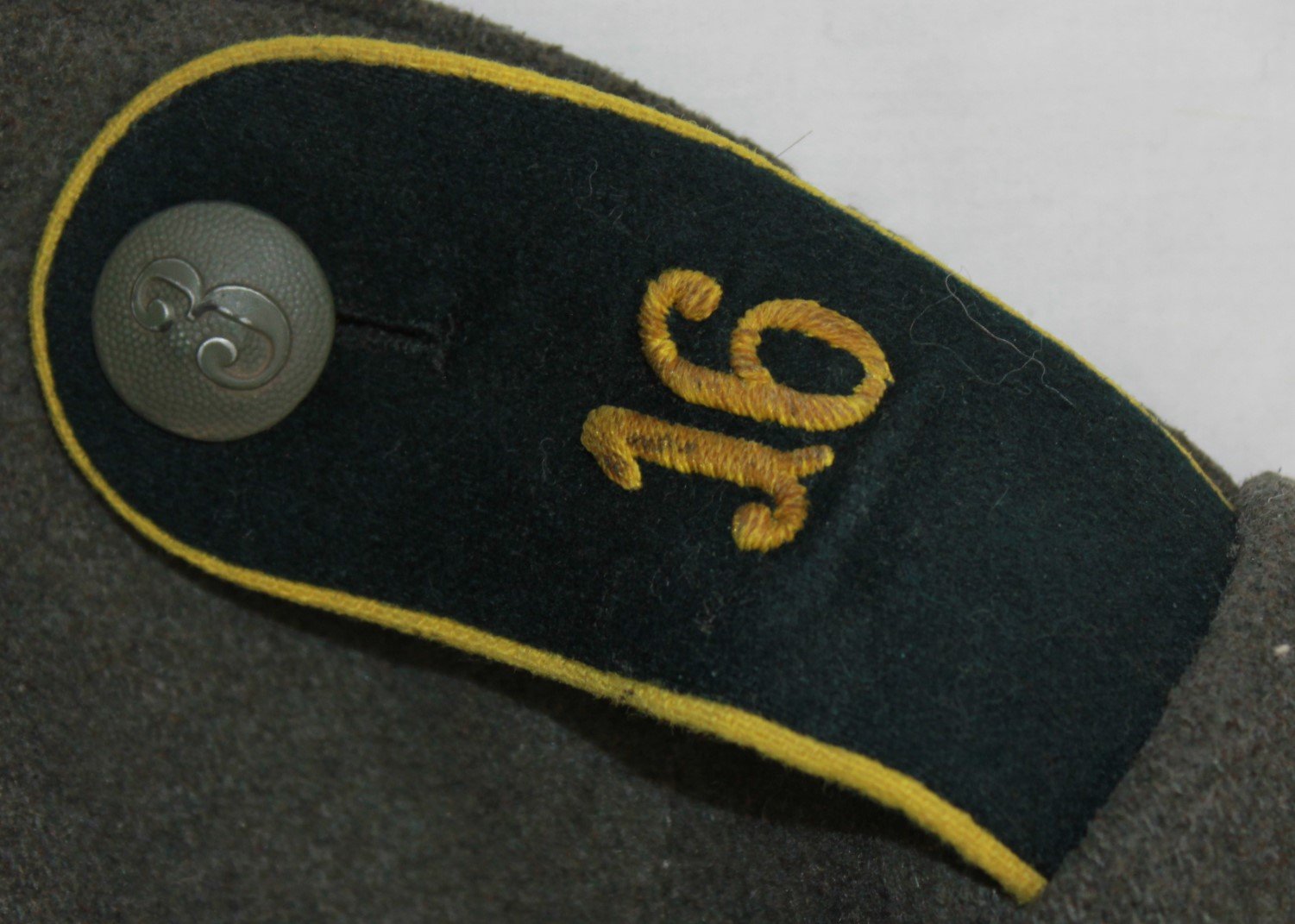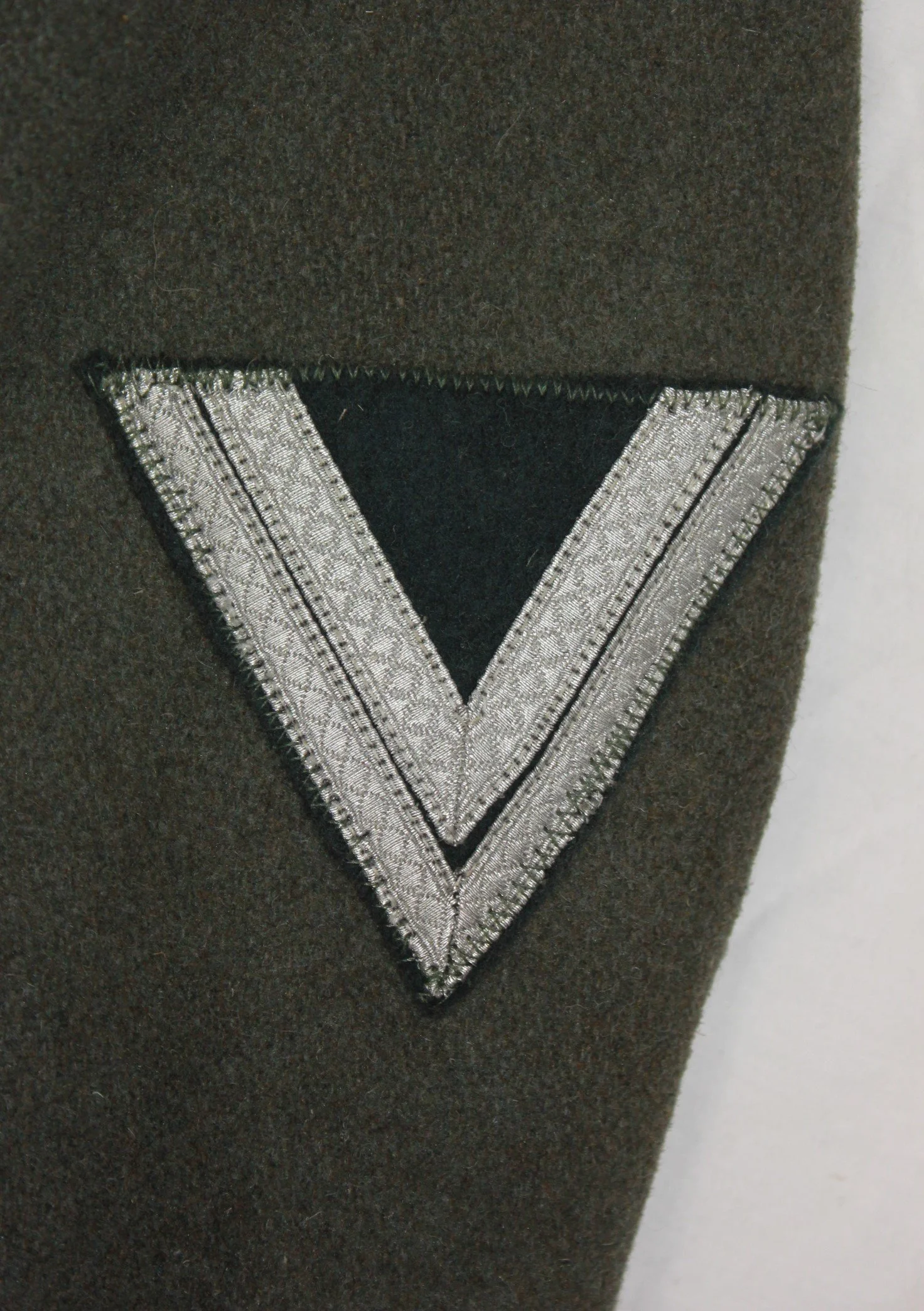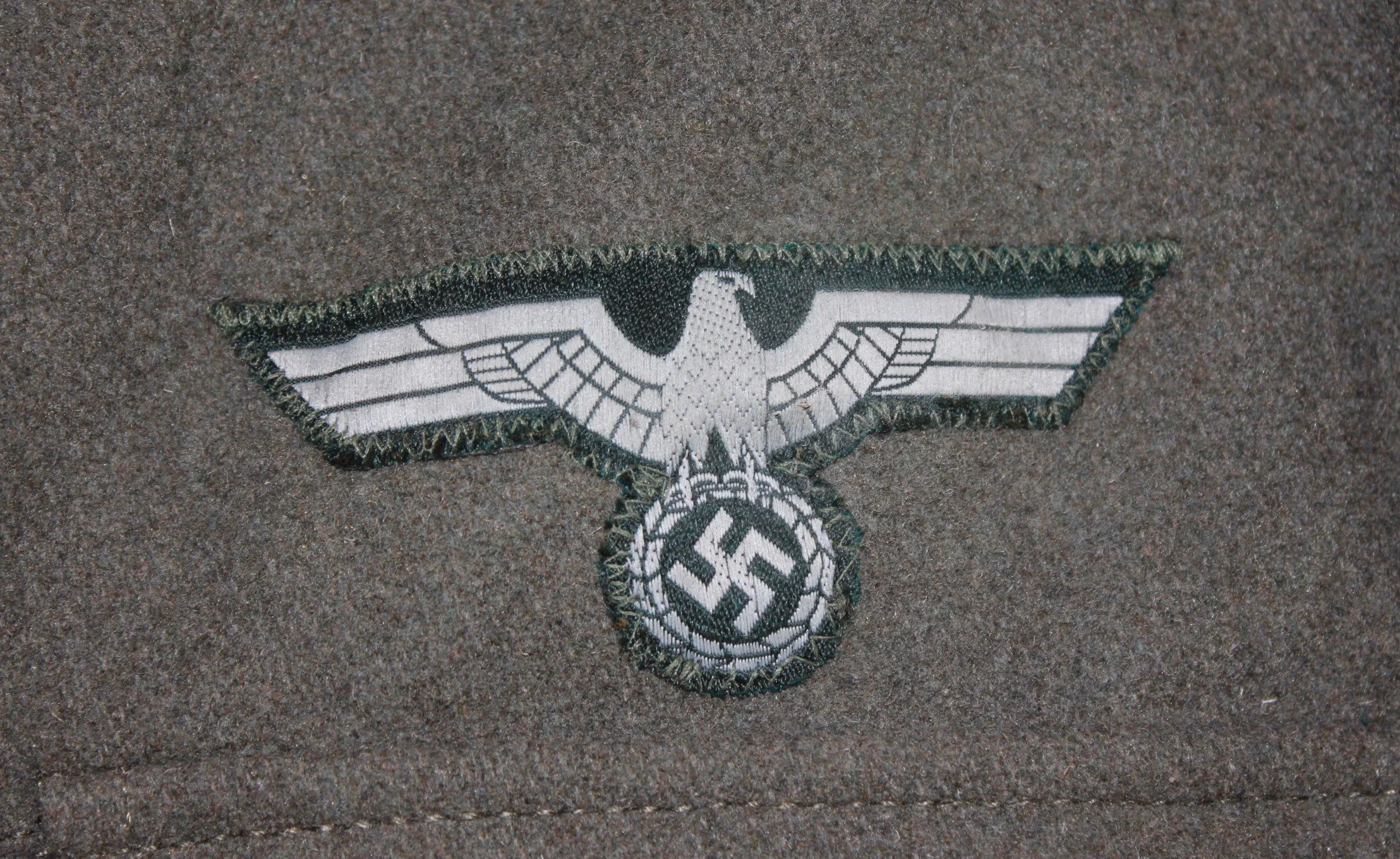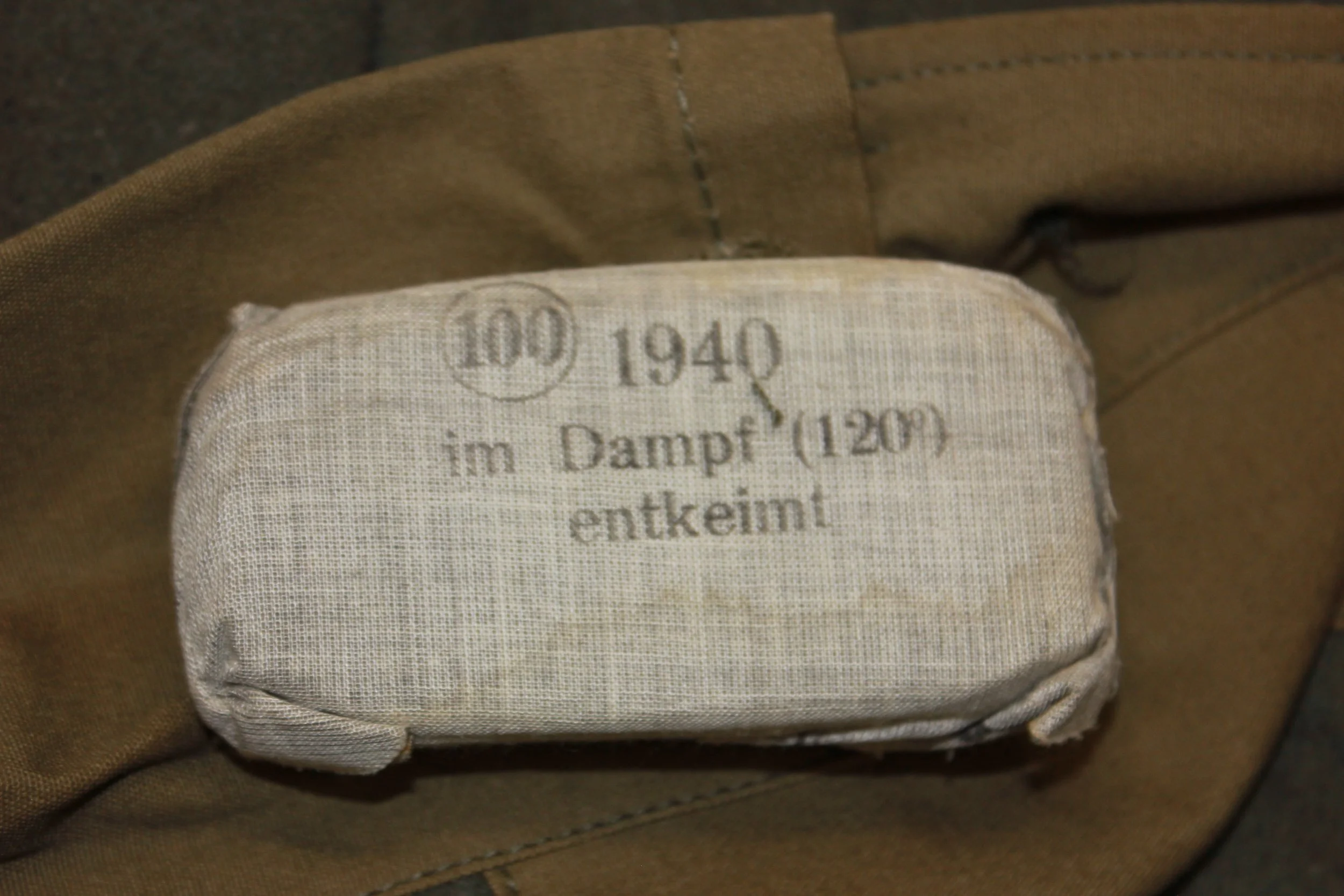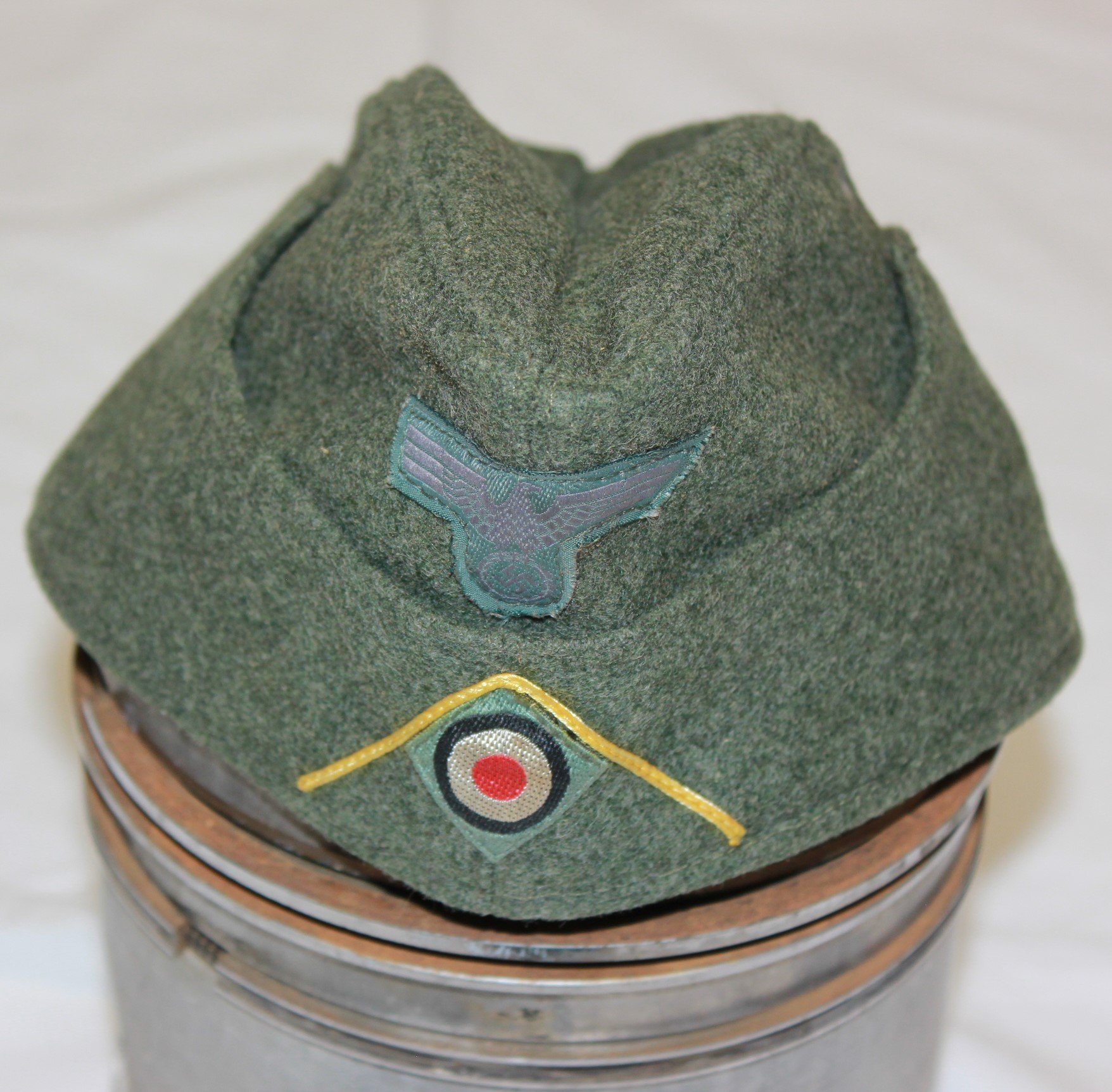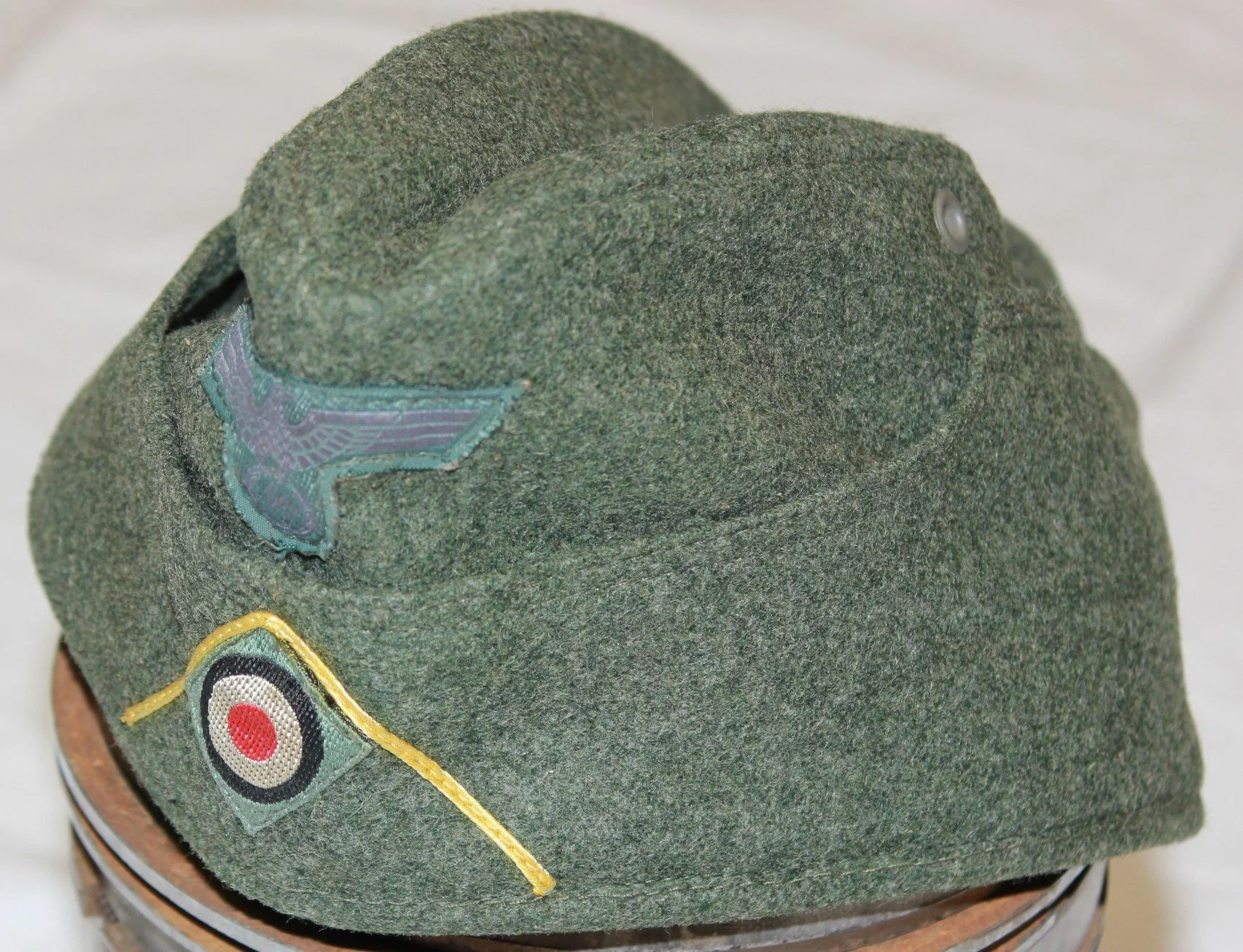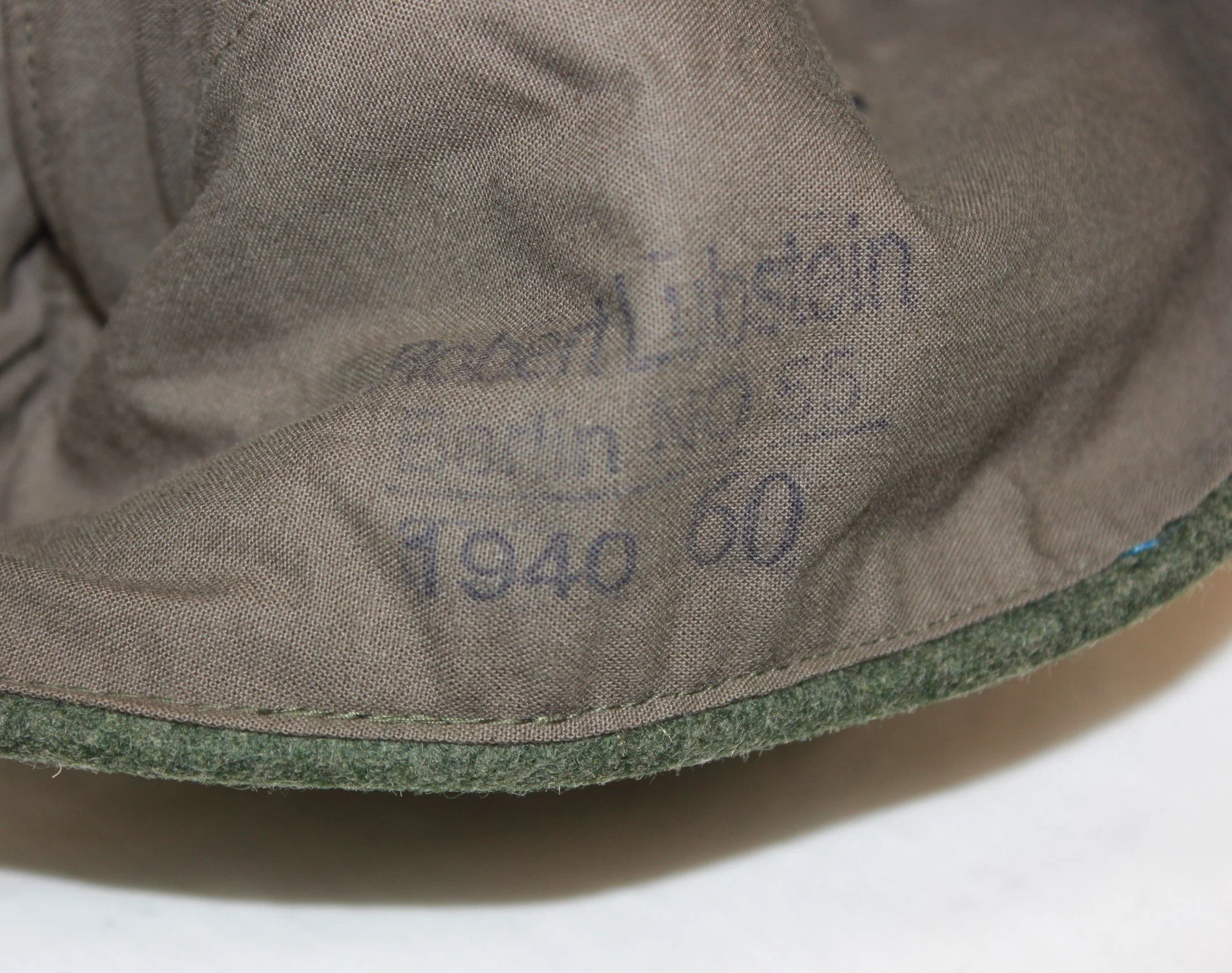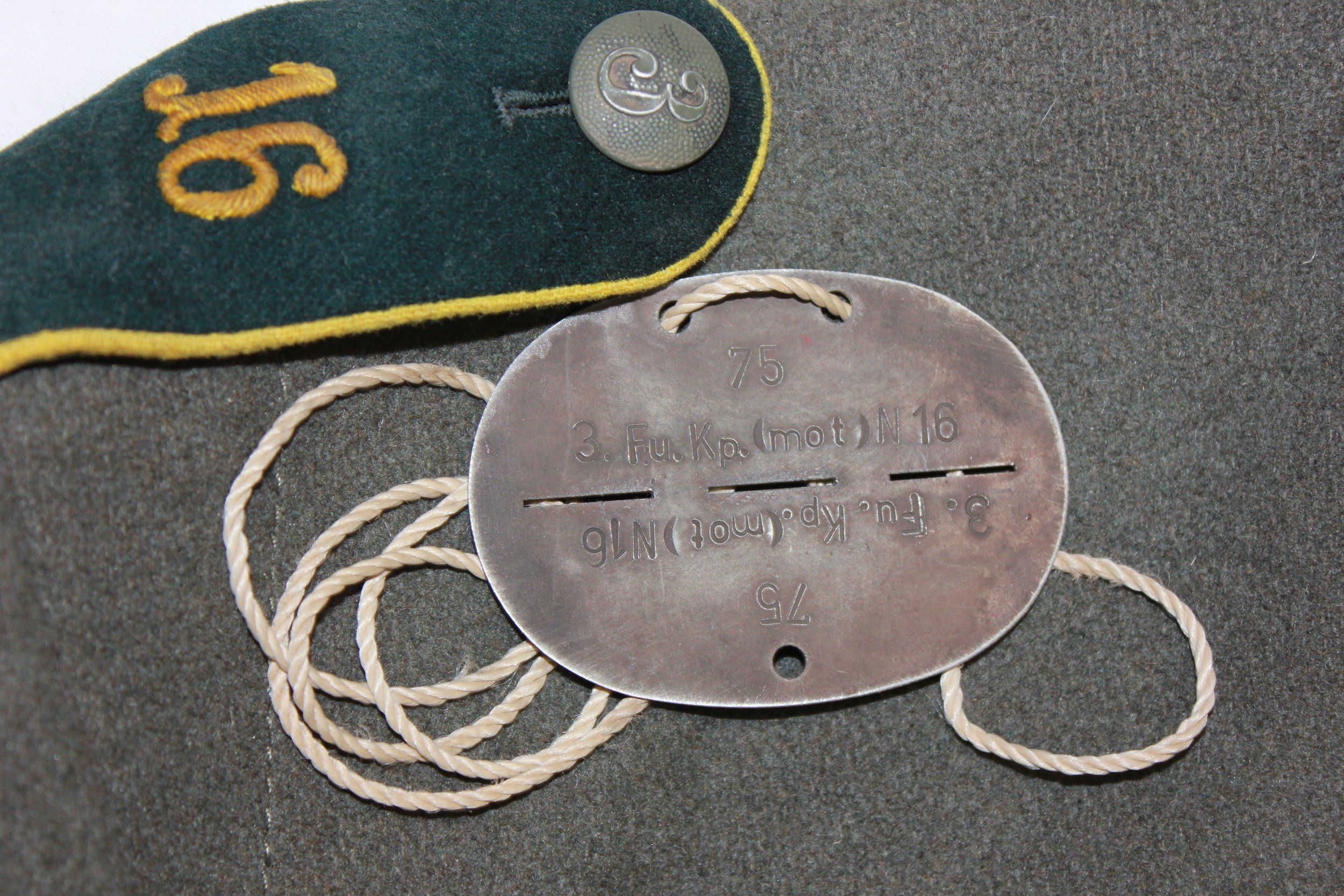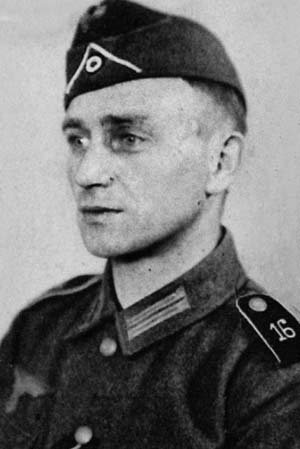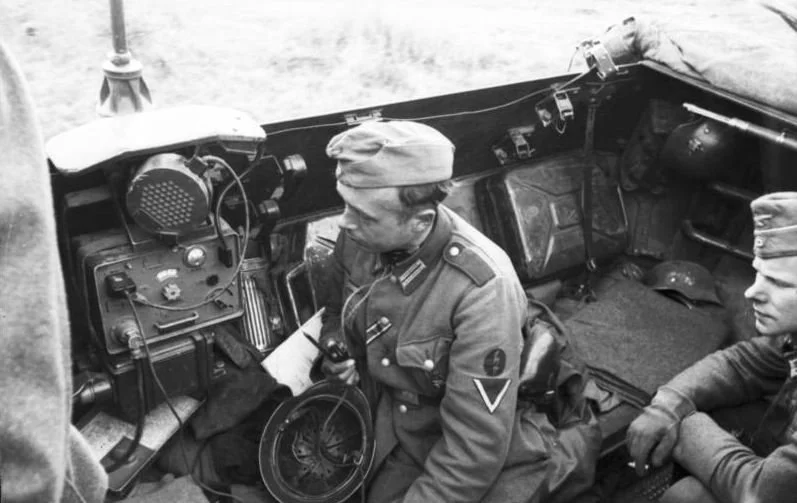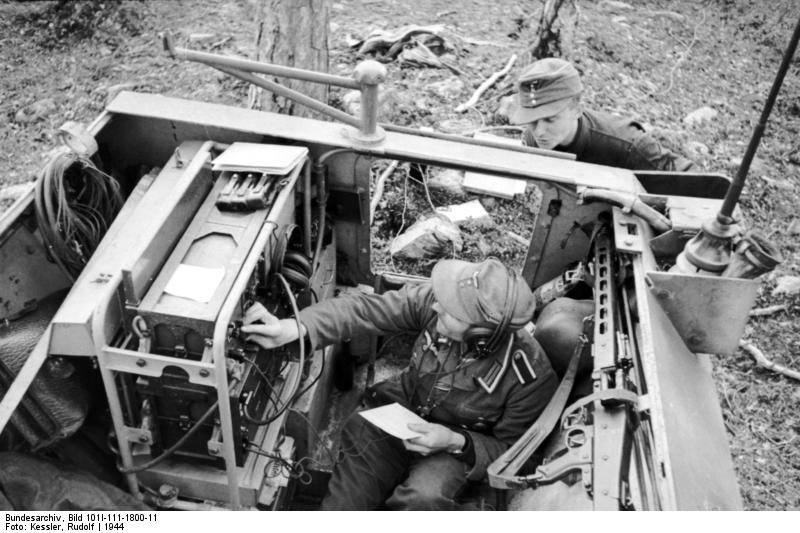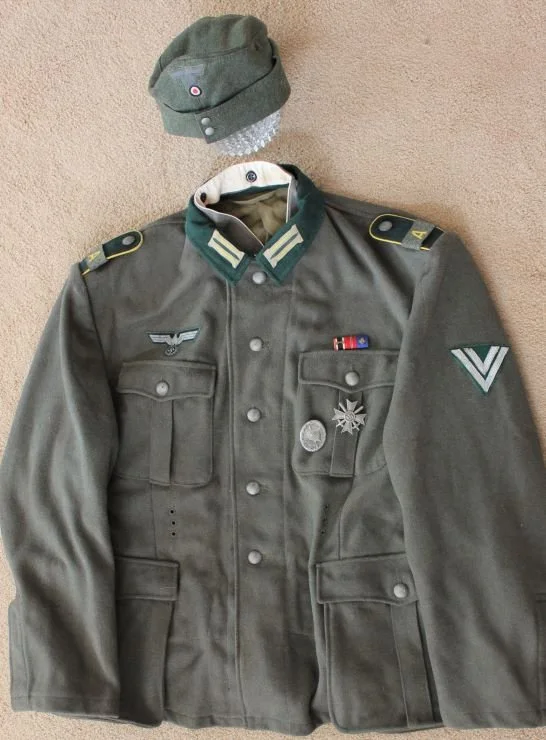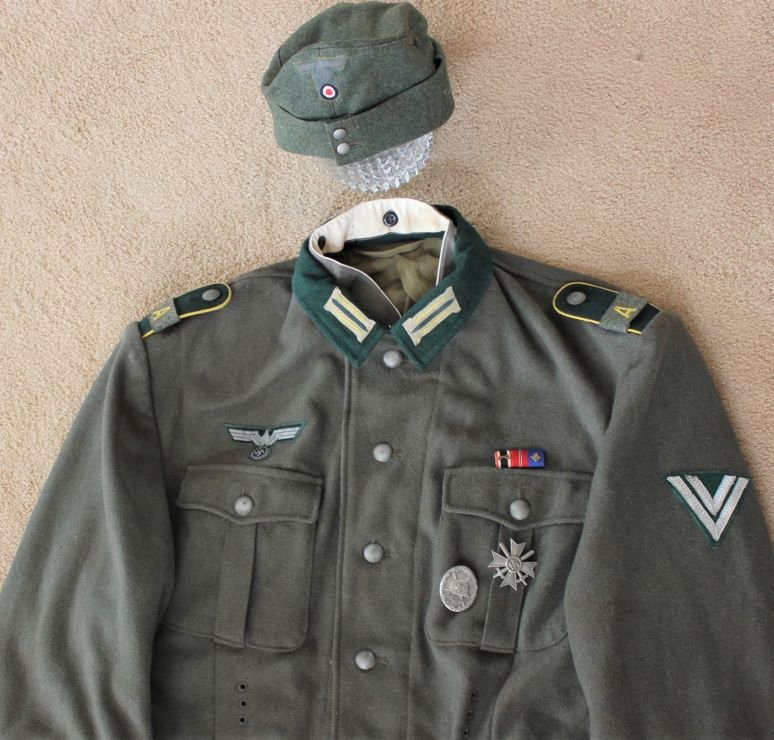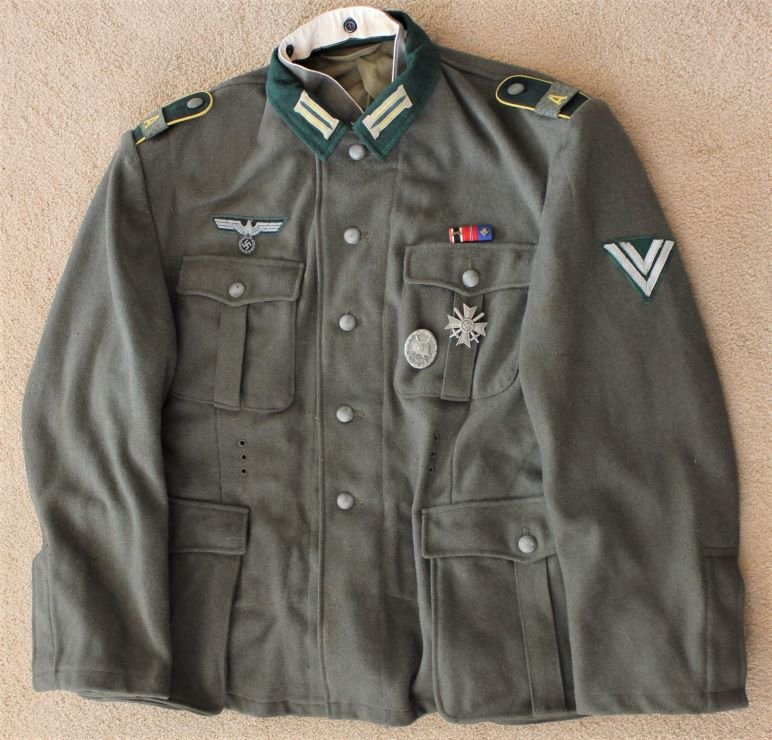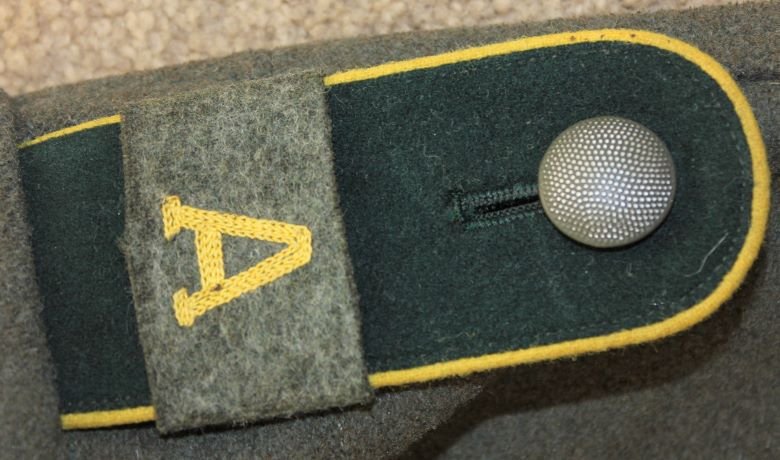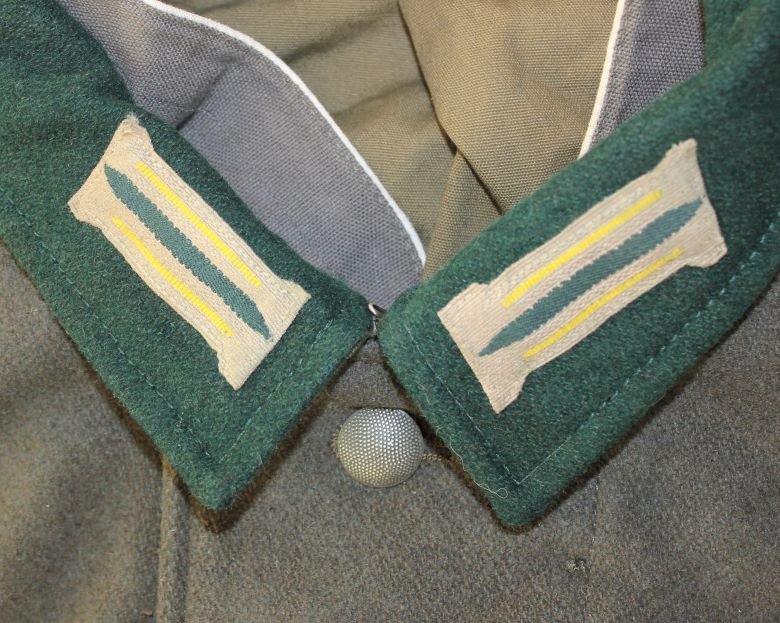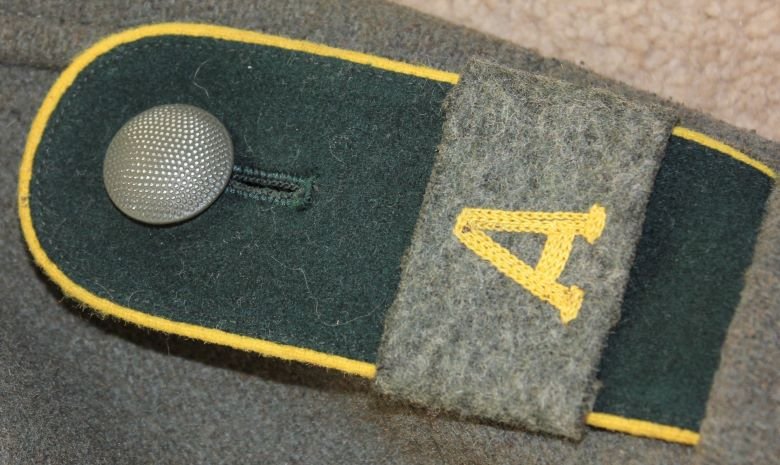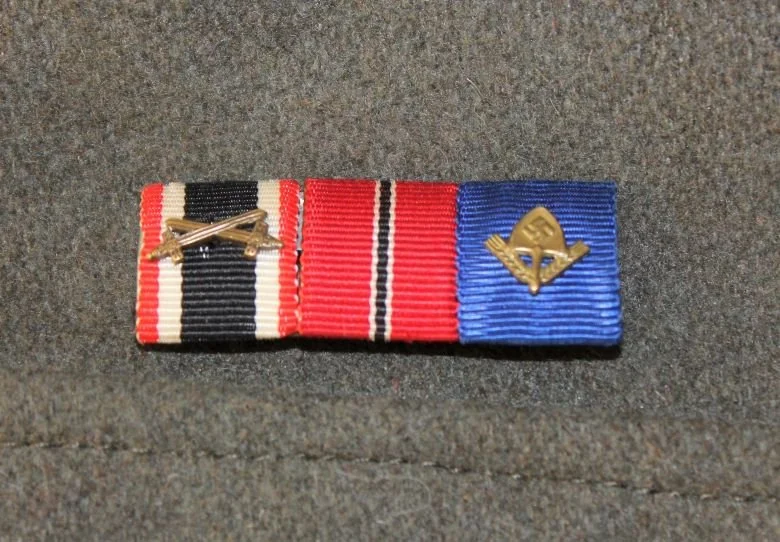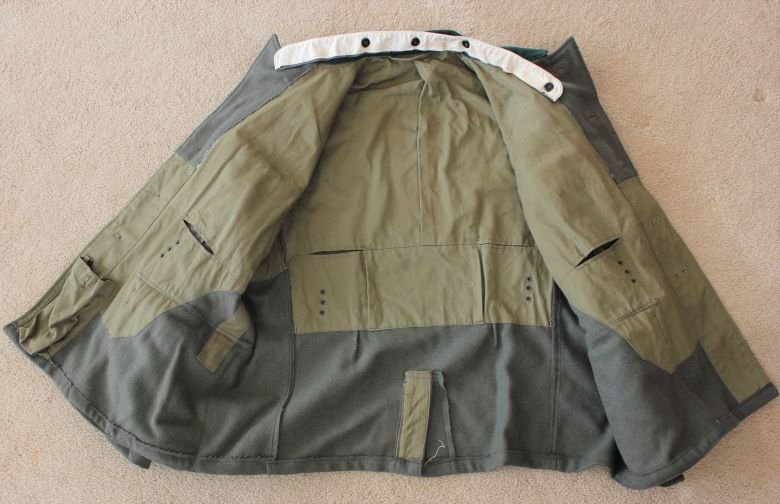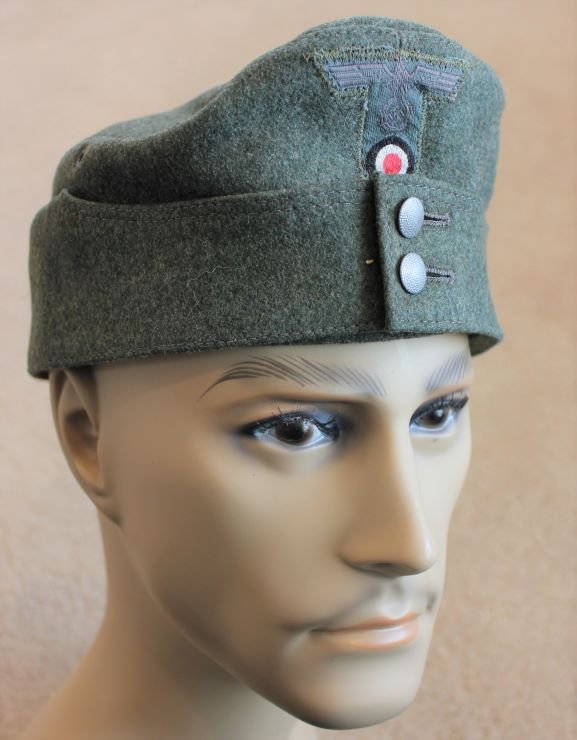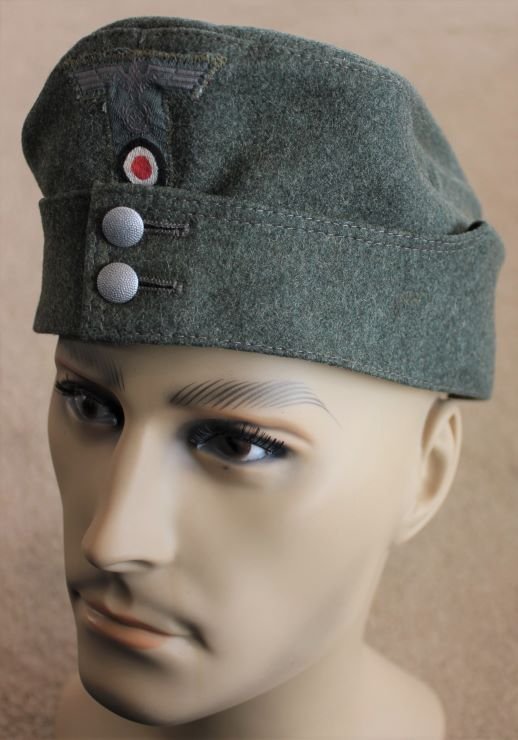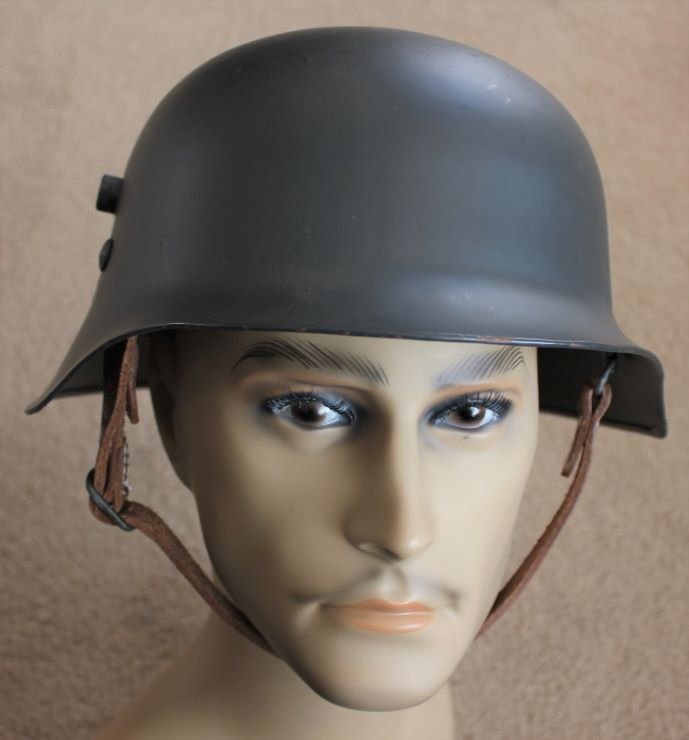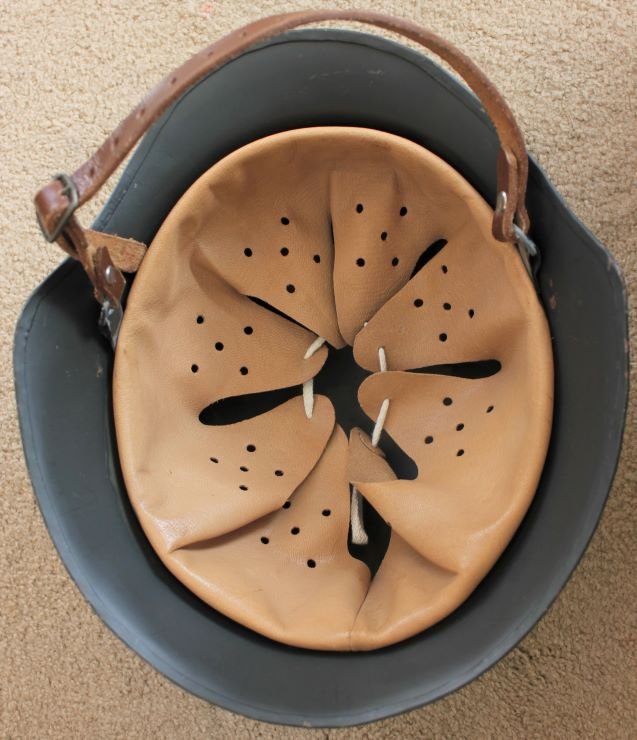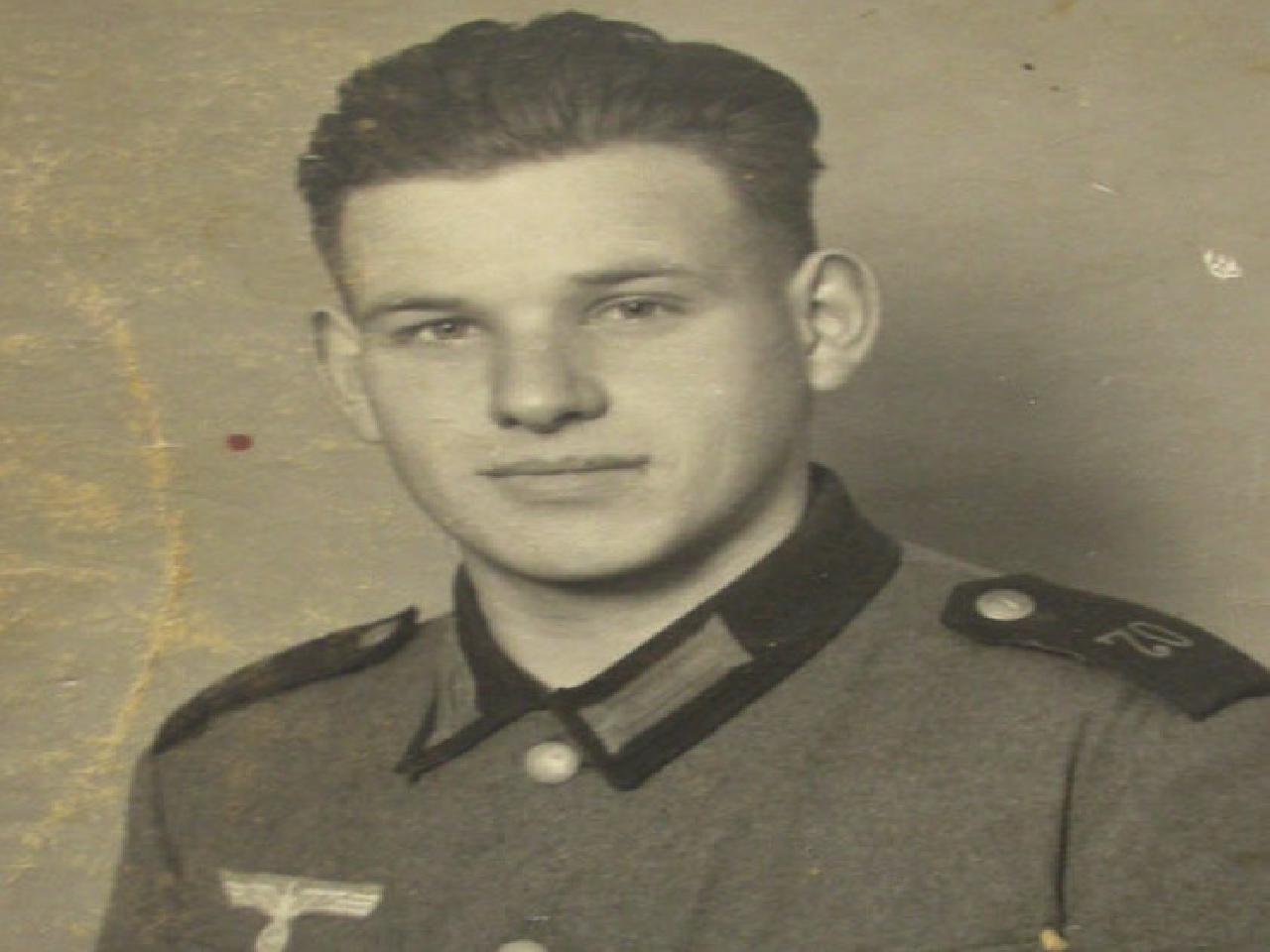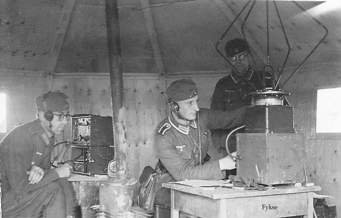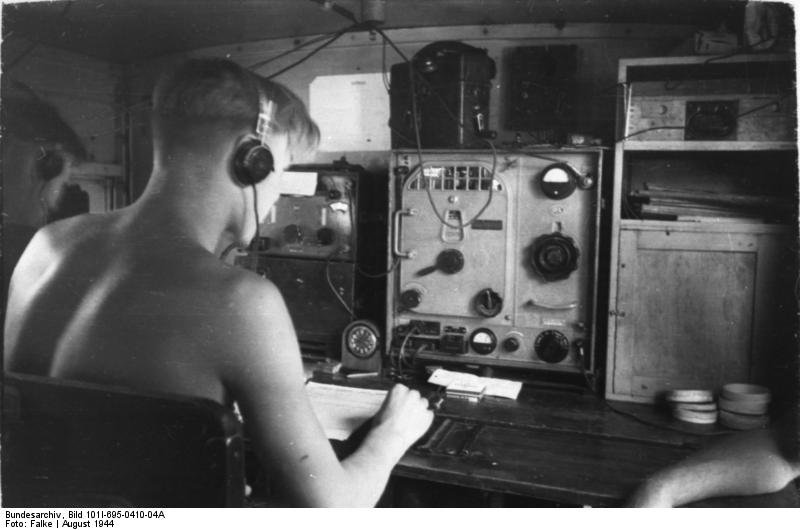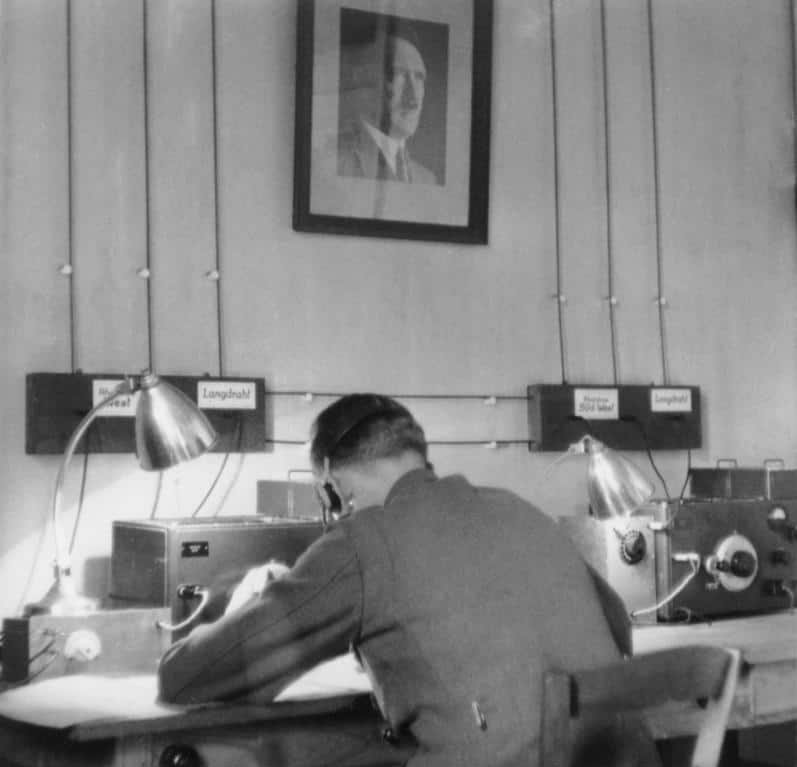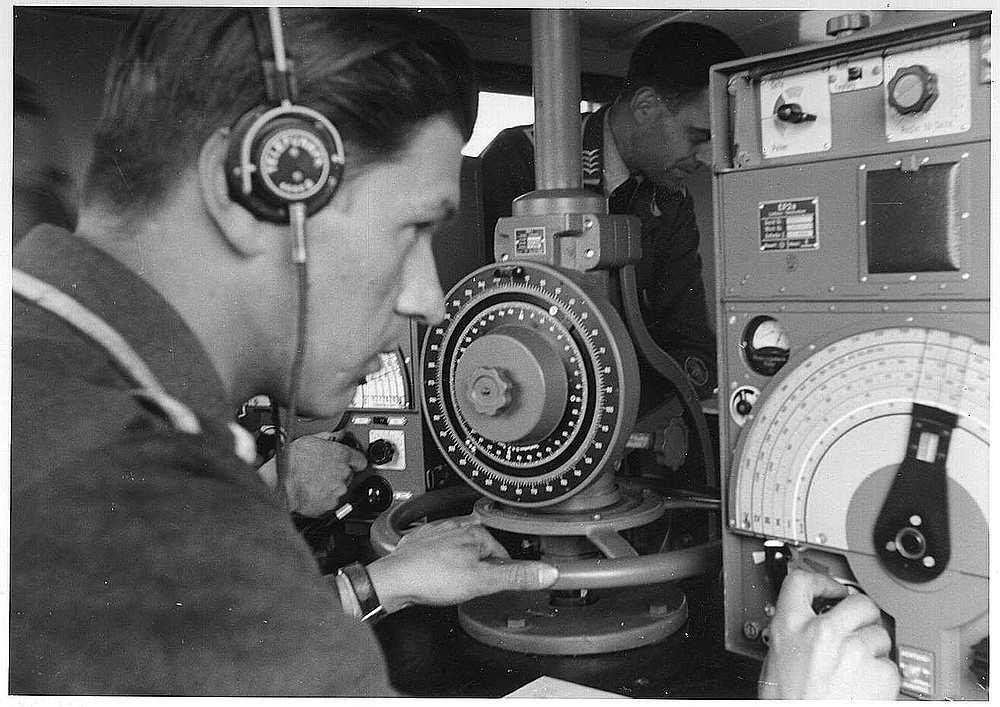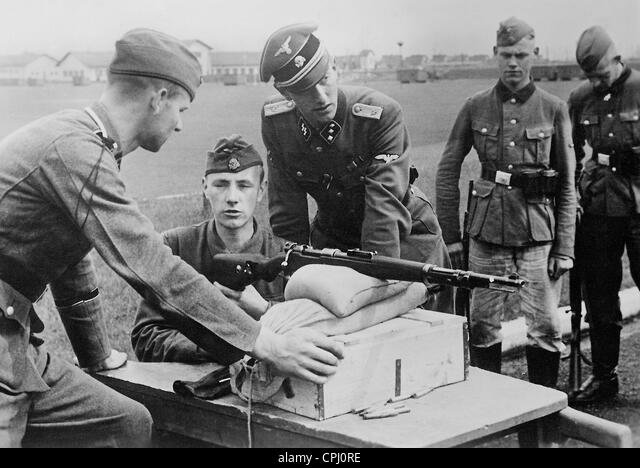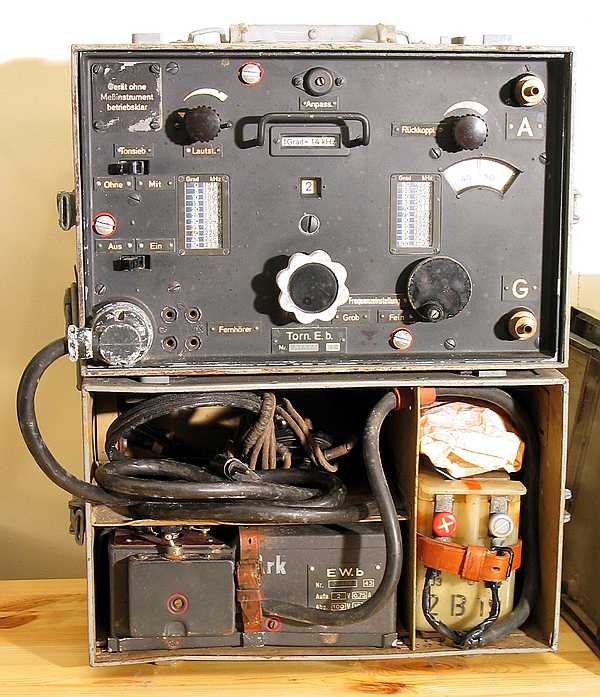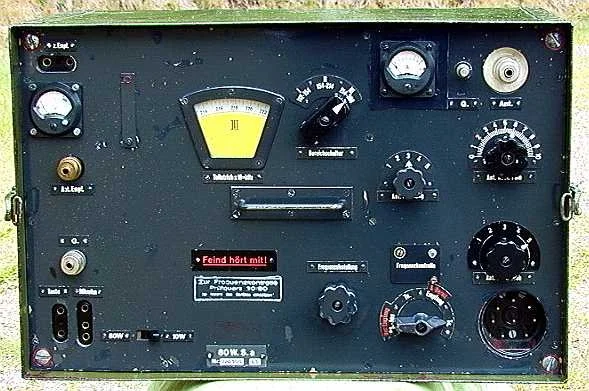Heer Signals~Communications:
"New Pictures” Obergefreiter u, Funker, Armee Group North, 1. Kp. Infantrie Rgt. 3, 1st Zug:
The division was formed in 1934 in Elbing, East Prussia, by expanding the 3rd Prussian Infantry Regiment of the 1st Division of the old Reichswehr, the ‘Deutsch Eylau’ As this was a direct breach of terms of the Treaty of Versailles, its exitance was initially concealed; it was formally designated as the 21st Infantry Division in October 1935. Comprising mostly from East Prussian origin, that formed the adaptation of the Division symbol, a Figure holding a shield bearing the black cross of the Teutonic Knights.
Mobilized in the 1st wave in 1939, the division took part in the German invasion of Poland and the following year’s invasion of France. For the next four years, if fought on the Eastern Front, largely as part of Armee Group North, assigned to the Eighteenth Army, breaking the Soviet defensive positions on the Msta River in front of Leningrad. The division fought in the Battle of Volkhov and the Second Battle of Lake Ladoga. The division distinguished itself during the fighting retreat from Leningrad in 1944.
After being involved in a series of defensive battles and the retreat to Riga as the Soviet army liberated their territory, late 1944 saw the 21st Infantry Division again in East Prussia, assigned to the Third Panzer Army in the area of Tilsit before being reallocated to the Fourth Army and deployed in the area on Insterburg, facing the Soviet’s East Prussian Offensive. Along with the bulk of the Fourth Army, it was encircled and largely destroyed in the Heiligenbeil Pocket in the closing week of the war. Remnants of the division’s forces were transported over the Frisches Haff to Pillau and Samland, where the units’ elements were eventually dispersed piecemeal to fight against the massive amounts of Soviet troops and armored vehicles that eventually overwhelmed them.
This Obergefreiter wears the first war pattern tunic with pre-war insignia attached in all areas, but his rank emblem, which is produced in wartime Feldgrau cloth. The hand-embroidered white ‘3’ on the shoulder boards indicates he is a member of the 3rd Regiment, which had roots in the Imperial Prussian Army. The # 1 on the buttons indicates he is in the 1st Zug. The collar-tab “Litzen” has a heavy, dark green backing, something that was fairly common in the pre-war times. The Lightning Bolt ‘Blitz’ on the left sleeve shows him to be on the company radio team.
Responsible for keeping the company leadership in constant communication, the ‘Funker’ user is a two-part man-packed transmitter/receiver such as the Tout. Fu. d2 wireless unit.
The Obergefreiter has not only won the Infantry Assault Badge but also the Iron Cross II class during his time with the regiment. His Oft Front ribbon shows his service in the initial winter of the Russian Campaign. His time spent on the West Wall before the battle of France is shown as well. During combat, when not wearing his headset, he would wear the standard steel helmet of the overseas cap. The uniform is completed with standard-issue trousers and marching boots.
The use of the radio in front-line communications was considered very advanced at the time and made the subject of a postage stamp showing a pair of Funkers in the northern swampy forests of Russia near Leningrad.
Schütze, Funk-Kompanie Nachrichten-Abteilung 26, 26. Infanterie-Division:
Raised as part of the mobilization in 1936 from the Rhineland-Westphalian area, the division was known as the “Dom” after its tactical symbol, the Great Cathedral of Köln (Cologne). The 26. Infanterie Division spent the early war years on the Siegfried Line and then took part in the Battle of France in May/June 1940, first under the command of the 16. Armee and later under the 12. Armee.
The division was transferred to the Ost Front in June 1941serving as part of Heeresgruppe Mitte (Army Group Center), crossing the Volga and storming Rzhev along with the 206. Infanterie-Division. It was heavily engaged in the winter offensive of 1941-42, suffering minimal losses. Engaged in the Battle of Kursk, the division suffered heavy casualties.
Disbanded after casualties were sustained near Kowel on September 10, 1944, it was rebuilt as the 26. Volksgrenadier Division at the Warthelager Maneuver Area in Poland in October with an infusion of Kriegsmarine and Luftwaffe personnel. Returned to the Western Front in November 1944, the division fought at Bastogne, ending the war with only 1,782 men surrendering to U.S. Army troops in the Harz Mountains in 1945.
Communication in the field was conducted mainly by radio and field telephone systems operated and maintained by specialists from the Nachrichten-Abteilung. As seen in accompanying period photos, the radios required several soldiers to move and operate.
This Feldbluse Model 1936 has early pattern shoulder insignia sewn into the shoulder joints, a rare modification. The Zitrone-Gelb or lemon-yellow Waffenfarbe of the Nachrichtentruppen is shown on the collar Litzen and the chain stitched Abteilung numeral sewn into the shoulder boards. The Bluse has received some wear but shows no indication of rank advancement. Perhaps reissued from Abteilung stores at some point for use in training or used by some unknown Schütze through to the Battle of France, who earned the Allgemeines Sturmabzeichen.
Note: The Germans laying the cables are wearing the funny long front 1920s WWI style helmets with the posts on them to hang a curved armor plate, for trench warfare.
Obergefreiter (Senior Lance Corporal), 3./Nachrichten Abteilung 16, 16. Infanterie Division (mot):
The Nachrichten Abteilung assigned to the German Infanterie division was made up of headquarter, telephone companies, radio companies plus a light supply column. In 1940, the 16. Infanterie Division fought in the Western Campaign and in August was reformed as the 16. Infanterie Division (mot) and moved to Hungary in the spring of 1941 to participate in the Balkan Campaign, followed by transferring to Heeres-Gruppe Süd for the beginning of Operation Barbarossa.
In July 1942, they crossed into Asia with the Caucasus into the Maikop oilfields, fighting to the lower reaches of the Volga River. It was this rapid advance that earned the division the nickname ’ Windhund’ or Greyhound Division.
The Obergefreiter wears a Heeres Dienstanzug Model 1936 with embroidered ciphered sew-in shoulder insignia collar Litzen, both colored in Citron-Gelb or lemon yellow Waffenfarben of the Nachrichten or Signal branch. He has been awarded the Kriegsverdienst Kreuz I u. II Klasse for his leaders in a non-combat role with the radio or 3. Kompanie. He has also been awarded the Ost Front Campaign medal for his service in the first winter of the battle in Russia.
Obergefreiter, Leitatelle der Nachrichten Aufklaerung Inspecktorate 7/VI 1943:
The Oberkommando des Heeres/General der Nachrichtenaufklärung, or GdNA, was the signals intelligence agency of the Wehrmacht. It was the successor to the former cipher bureau known as Inspectorate 7/VI in operation between 1940 and 1942, when it was further reorganized into Leitstelle der Nachrichten Aufklaerung LNA, or the Headquarters for Signal Intelligence.
The LNA’s central cryptanalytic agency worked in the massive, multi-story underground Zeppelin Bunker near Zossen. The members of this command concentrated on enhancing security as they worked to break the Allied code systems. Raw intercepts were fed to the LNA from at least 10 Feste Horchstellen or Intercept Stations for the Interception of foreign traffic and 5 KONA or Signal Intelligence Regiments attached to the various Army Groups.
The Obergefreiter, a mid-level technician, was part of a branch-wide draft of skilled personnel to support the expansion of the LNA However, now they also incorporate Aufschiebeschlaufen or slip-on ciphers introduced in . Formerly assigned to Nachrichten Abteilung 5,2, which was part of XII. Armeekorps / Heeresgruppe Mitte. His Feldbluse Model 1936 Schulterklappen with embroidered ‘52’ still reflects this. 1940.
The capital Latin ‘A’ indicates signal intelligence. Nachrichten Abteilung 52 took part in Operation Barbarossa and continued to on the Ost Front until 1944. Before induction, the Obergefreiter served in the Reichsarbeitsdienst for more than the standard period shown by this service ribbon with the device.
While on the Ost Front, he has been awarded the Kriegsverdienstkreuz I. u. II. Klasse mit Schwertern, along with the Verwundetenabzeichen in Silber, probably for loss of a foot or other debilitating wound that would make him unfit for front-line service, and drafted into the LAN as soon as he could exit the hospital.
Now working in a very safe and secure bunker, with an entrance masked as a house in the woods, his major concerns now are focusing on his never-changing duty during which military functions are a welcome break and constant security that follows him off the grounds, and back to the barracks and watches his every move. *The helmet is a real odd one, it is not a WWI M1917, nore a M1940, so I’m calling it a 1930s short lived veriant, and has been given to these troop loked in a bunker, and It needed a home, it may not fit perfect, but it has a place on the site now.

